Economics and the 2008 crisis: a Keynesian view
Use 'Print preview' to check the number of pages and printer settings.
Print functionality varies between browsers.
Printable page generated Thursday, 25 April 2024, 10:58 PM
Economics and the 2008 crisis: a Keynesian view
Introduction
Decisions, decisions, decisions. Governments need to make decision about how much to spend, how to finance their debt and how much revenue to collect, in order to ensure their citizens’ welfare is as high as it can be, given that there is a limited amount of resources available or borrowable against future repayments. These decisions become even more pressing and their consequences more acute in times when the economy is not growing; or worse, in moments when it is actually shrinking. As the famous economist Paul Krugman wrote in 2012, 'times of crisis are when economists are most needed. If they cannot get their advice accepted in the clinch – or worse yet, if they have no useful advice to offer – the whole enterprise of economic scholarship has failed in its most essential duty'.
In this OpenLearn course you will work through seven sections in which you will engage with some of the major aspects of economic policy:
- What types of problems are governments concerned with?
- Which policy instruments do they have at their disposal?
- How do they make decisions about the effectiveness of alternative courses of action?
One of the most challenging aspects of economic policy and decision making is the study of how changes in economic variables influence the more immediate and the future economic response. As Charlie Bean, the deputy governor of the Bank of England in the early 2010s, puts it, 'people describe the steering of the economy like driving a car when all you can do is look through the rear view mirror'.

This shows a boy on a ladder, spray painting graffiti on a wall. There is already writing on the wall which says, in large letters, ‘Running the economy’. The boy has sprayed out the first ‘n’ and has replaced it with an ‘i’ – changing it to ‘Ruining the economy’.
So, any claims as to what will happen in the future as a result of current policy are grounded in economic models about how economies, people, firms and industries within them, will respond. In this course you will discover that different economists have different theories about how the economy works, and different theories lead to different results, depending on the state of economies. This creates considerable controversy over which policies are right – you might already have your own views too.
You will also learn about the ways in which John Maynard Keynes’s theories revolutionised the thinking about how economic crises appear and how the government can solve them. In doing so, you will start to build an economic model to explore Keynes’s ideas.
Keynes’s thinking was very influential with economists and policymakers for several decades following the 1930s, but then fell out of favour for a time. The economic downturn that started in 2008 led to a widespread revival of interest as economic conditions seemed to resemble those seen in the 1930s. So a study of Keynes’s ideas is not just of historical interest but highly relevant to modern policymaking too.
This OpenLearn course is an adapted extract from the Open University course DD209 Running the economy.
Learning outcomes
After studying this course, you should be able to:
understand what economists mean by ‘models’ and how they can be used to inform economic policy
define the concept of equilibrium and explain how it can occur at low levels of output
begin to understand the Keynesian model of aggregate demand and how it explains why economies can get stuck in a low output equilibrium
critically evaluate the role of fiscal policy in changing the economy.
1 Keynes in context
Before we start to develop our Keynesian model of the economy, it is helpful to know something about Keynes and the context that compelled him to develop his theories, which are still influential today. Below you will find a timeline of some of the highlights in Keynes' life, and an audio clip in which two Open University economists discuss some key economic ideas, and Keynes' influence in shaping economics and economic policy.
Click on the link below to launch the timeline and then click and drag your mouse to move along the timeline for highlights in the life and career of John Maynard Keynes (1883–1946). Click on each entry to read some details.
Now listen to the following audio. This audio is taken from Block 2 of the Open University course DD209 Running the economy so there are a number of references to the block, as well as a summary of Block 1 of the course, which you should ignore. As you listen to the discussion, you may find it helpful to note down the key points.
Transcript: Open University economists discussing Keynes' ideas and influence
Activity 1
Thinking about the timeline and your notes from the audio clip you have just listended to, suggest one important economic legacy of Keynes.
Discussion
Keynes remains, even today, one of the most influential economists. His legacy includes his General Theory (see the timeline) which set out his thinking that economies do not naturally provide jobs for everyone – governments may need to intervene. Keynes is also recognised as one of the founders of the branch of economics called macroeconomics (mentioned in the audio). You may have made other suggestions.
2 Planned and actual values
Notation in equations
In the sections which follow, you will be introduced to some simple equations. Don’t panic! Wherever they are used, we teach you step by step how to read them. A general point to be aware of is that where one term is multiplied by another we will follow standard maths notation and leave out the multiplication sign. For example, in Section 6, you will see the equation of consumption C = a + bY. We write ‘bY’ instead of writing ‘b × Y’ (with the multiplication sign ‘×’). The general rule is that when two terms are placed side by side, they are to be multiplied.
The economy as modelled by the circular flow diagram, below, appears to be a rather peaceful place, where expenditure is always identical to output and saving is always identical to investment. But saving decisions and investment decisions are made by different people, so it seems there is no reason why they should match, and Keynes’s model of change in national income depends precisely on expenditure being too great or too small to match output and hence on saving being too small or too great to match investment.
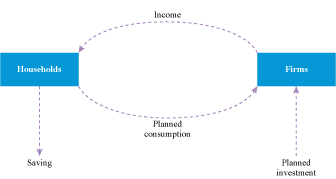
Flows of money are shown by dashed lines with directional arrowheads.
A flow labelled ‘Income’ runs from Firms to Households.
A flow labelled ‘Planned Consumption’ runs from Households to Firms.
A dashed line pointing vertically down from Households is labelled ‘Saving’.
A dashed line pointing vertically up to Firms is labelled ‘Planned Investment’.
Activity 2
Watch the video below to see how this paradox is resolved. This video is part of the Open University course DD209, Running the economy, so there will be references to Block 1 of the course, which you should ignore.
Transcript: Planned and actual values
3 The consumption function
So far, we have been representing what happens in the economy using the circular flow of income model.
To demonstrate Keynes’s theories about equilibrium in a more quantifiable way, we need to use what is called the aggregate demand model. The two main components of this model are consumption and investment. Section 6 will show you an extended version of this model which includes government expenditure, but for now, Figure 3 represents an economy with no government and no trade and relations with other countries. This section consolidates your understanding of the first element in this model: the consumption function.
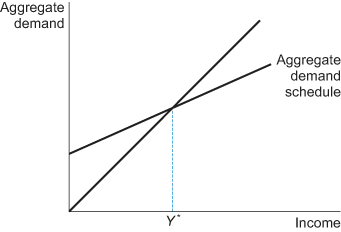
The diagram shows an aggregate demand schedule.
The diagram contains a vertical axis, which is labelled as ‘Aggregate Demand’ and a horizontal axis which is labelled as ‘Income’.
There is a straight line from the origin, sloping upwards at 45 degrees.
The aggregate demand schedule is a straight line, sloping up from left to right, from a point about one quarter of the way up the vertical aggregate demand axis. The slope of the schedule is quite shallow.
The aggregate demand schedule intersects the 45 degree line about half way along the 45 degree line. From this point of intersection, a dashed vertical line is taken down to the horizontal Income axis, to a point on the axis labelled as capital letter Y followed by a star.
3.1 Building a consumption function (1)
According to Keynes, there is a fairly stable relationship between planned consumption and current income. Households plan to spend a fairly constant proportion of each additional pound they earn. He calls this proportion the ‘marginal propensity to consume’. To present this diagrammatically, we start with two axes at right-angles to each other.
Activity 3
The horizontal axis of Figure 4 shows income (Y) and the vertical axis shows planned consumption (C).
Suppose that consumers plan to spend 70 pence of each additional pound they earn. The marginal propensity to consume is 0.7. The usual symbol for the marginal propensity to consume is b. So, we can say b = 0.7.
Click on three points on Figure 4 which would lie on the consumption function.
3.2 Building a consumption function (2)
We now have a hypothetical consumption function.
Activity 4
Look at Figure 5 and answer the questions that follow.
Question 1
(a) What is the equation of the consumption function we have drawn?
Answer
The equation is: C = 0.7Y
Question 2
(b) In what way is it unrealistic to suggest, as in this example that the consumption function would start from the origin?
Answer
Even with no income, there must be some consumption: households need to consume basic goods so would need to borrow or run down savings balances to finance this consumption. This bare minimum consumption that does not depend on income is known as exogenous consumption. Exogenous consumption is usually symbolised by a.
Question 3
(c) How would the consumption function be affected if exogenous consumption (usually symbolised by a) was £100? Answer by picking up and dragging the consumption line to take account of this level of exogenous consumption.
3.3 Building a consumption function (3)
Activity 5
Look at Figure 6 and answer the following question.
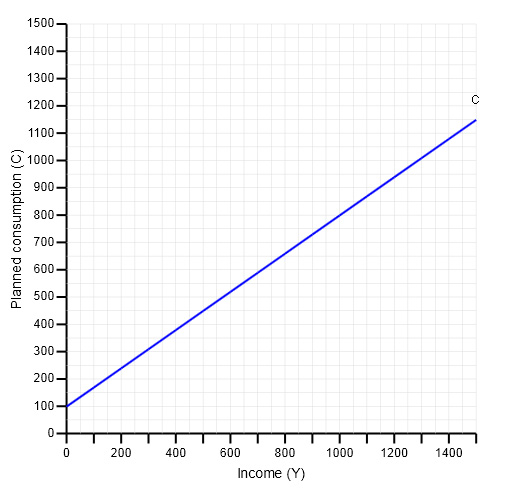
The diagram shows a consumption function, labelled as C.
The vertical axis is labelled as ‘Planned consumption (C))’ and has values from 0 to 1500, at intervals of 100. The horizontal axis is labelled as ‘Income (Y)’ and has values from 0 to 1500, at intervals of 100.
The consumption function is a straight line that slopes upwards, starting from point 100 on the vertical axis. The upward slope is fairly steep but less than 45 degrees. The end point of the function on the diagram is at Y of 1500 and C of 1150. Coordinates of points the consumption function passes through include, for example, (500Y,450C) and (1000Y, 800C).
What is the equation of this revised consumption function?
Answer
The equation is: C = 100 + 0.7Y
4 Modelling equilibrium
We have said that the economy will be in equilibrium when planned saving matches planned investment. So we need to use our diagram to explore this relationship. First, we need to show planned saving. Our diagram already shows planned consumption at each level of income, and of course planned saving is simply the difference between income and planned consumption. Having shown saving, we need to go on to add investment to our model to complete our analysis of equilibrium.
4.1 Modelling planned saving (1)
A good way to make our diagram work for us to show planned saving (the difference between income and planned consumption) is to start by reflecting each value of income plotted on the horizontal axis on to the vertical axis where planned consumption is plotted. This will make it easy to compare visually each level of income with its corresponding level of planned consumption. So let’s start with just the two scaled axes and imagine that each value of income emits a ray of light vertically. A mirror is held diagonally to reflect that ray on to the vertical axis. Click on each circle on the bar underneath the chart, working from left to right to watch this process build up step by step.
The line we have traced out is called, for obvious reasons, the 45-degree line, and it shows us at a glance how far up from the horizontal axis any value of income would appear if we plotted it on the vertical axis. At any point on the line, the variable plotted on the vertical axis – planned consumption – is equal to the variable plotted on the horizontal axis – income.
4.2 Modelling planned saving (2)
If we now show our consumption function on the same diagram, we can visually compare each level of income with its corresponding level of planned consumption.
Activity 6
Recalling that planned saving is the difference between income and planned consumption, click on two points on the diagram which, when joined up, will show the amount of planned saving at an income level of £600.
4.3 Modelling planned investment
At an income level of £600, households are planning to spend £520 on consumption and to save the remaining £80. But firms are not planning to invest at all! Let’s now incorporate planned investment into our diagram. This will mean two slight changes.
- We re-label the vertical axis ‘Aggregate demand’, as we are adding investment demand to consumption demand.
- We reinterpret the 45 degree line accordingly. Recall that at any point on the 45-degree line the variable plotted on the vertical axis is equal to the variable plotted on the horizontal axis. So in this diagram, at any point on the line, aggregate demand is equal to income.
The Keynesian model treats planned investment as an exogenous component of demand, that is, as not dependent on current income. It will therefore appear as a horizontal line on our diagram but, when we add planned investment to planned consumption, the aggregate demand line, which at present shows only planned consumption, will move upwards by the amount of planned investment we introduce.
Activity 7
Look at Figure 9 and complete the tasks that follow.
Task 1
(a) At present, the planned investment line is lying along the horizontal axis as we have not yet shown any planned investment. Pick up and drag the line till it shows a level of planned investment equal to the level of planned saving at an income level of £600. (Note that the scales on the axes have been changed to make this task easier - the income level of £600 is now towards the far right of the diagram.
Task 2
(b) What is the equation of the aggregate demand function you have derived?
Answer
The equation is: AD = 180 + 0.7Y, as there are now two constants: exogenous consumption (100) and planned investment (80).
4.4 And so to equilibrium
In our diagram, planned saving is shown by the vertical gap between the consumption function and the 45-degree line. Planned investment is shown by the vertical gap between the consumption function and the aggregate demand function.
Given the assumptions we have made about exogenous consumption, the propensity to consume and the level of exogenously determined investment, these two vertical gaps are equal at an income level of £600, so at this income level planned saving = planned investment. We have therefore illustrated an economy in equilibrium at an income level of £600.
Note that the AD line (C + I) crosses the 45-degree line at an income level of £600. Since at any point on the 45-degree line AD = Y, we can say that at an income level of £600 aggregate demand = income.
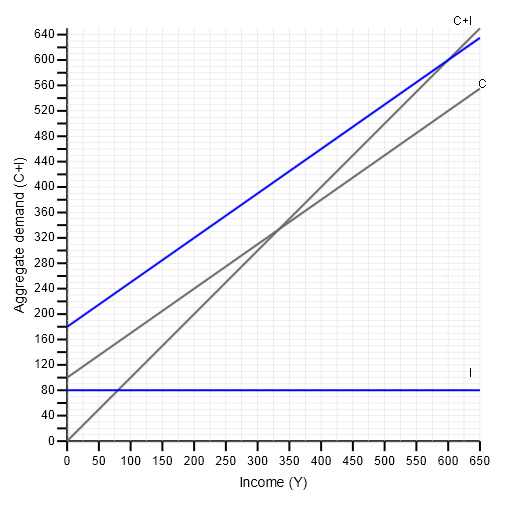
The diagram shows an aggregate demand (C+I) function, a consumption function (C), a planned investment function (I) and a 45 degree line.
The vertical axis is labelled as ‘Aggregate Demand (C+I)’ and is marked from 0 to 640, at intervals of 40. The horizontal axis is labelled as ‘Income (Y)’ and is marked from 0 to 650, at intervals of 50.
The 45 degree line slopes up from the origin.
The planned investment line (I) is horizontal, drawn across from the point 80 point on the vertical aggregate demand (C+I) axis.
The consumption function (C) slopes upward more shallowly than the 45 degree line, from the point 100 on the vertical axis.
The Aggregate Demand function (C+I) is in shown in blue and lies above and is parallel to the consumption function (C). It slopes upward from the 180 point on the vertical axis. The vertical gap between the C+I and the C function is equal to the value of planned investment (I).
The Aggregate Demand (C+I) function intersects the 45 degree line at an income level of 600. At this point, Aggregate Demand also equals 600.
So we have two ways of looking at equilibrium in this simple economy.
When the economy is in equilibrium:
- Planned saving = Planned investment
- Aggregate demand = Income
5 When equilibrium is not enough
Keynes believed that an economy may settle into equilibrium at a level of income too low to support full employment.
We can use our model to illustrate this possibility and to illustrate how policy intervention to stimulate aggregate demand may bring about full employment.
5.1 Underemployment equilibrium
Equilibrium occurs when aggregate demand equals income, so, in the previous activity, when AD is equal to income at £600. But it may be that AD of £800 equal to Yf is needed to support full employment, so equilibrium would need to occur at an income level of £800. Given current consumption and investment habits, however, if income stood at £800, AD would be less than £800, as we can see from the fact that the C + I line lies beneath the 45-degree line at an income of £800. To achieve full employment, a policy intervention would be needed to stimulate demand sufficiently to bring about equilibrium at an income level of £800.
You will now use an Aggregate Demand tool to explore how we could move the economy to a full employment equilibrium.
Activity 8
Select the link below to access the tool.
Place yourself in the tab 'Closed economy without government'. This means the economy has no government, and demand comprises only consumption and investment. Complete the following tasks.
Task A
(a) Set the inputs to the following values: exogenous consumption (labelled 'Consumption intercept' equals 100, the marginal propensity to consume is 0.7, investment is set at 80 and full-employment income is 800.
Answer
The outputs and chart in the tool should look like this. You can see that this economy is currently in equilibrium at an income of 600 but we want to reach the full-employment equilibrium of 800.
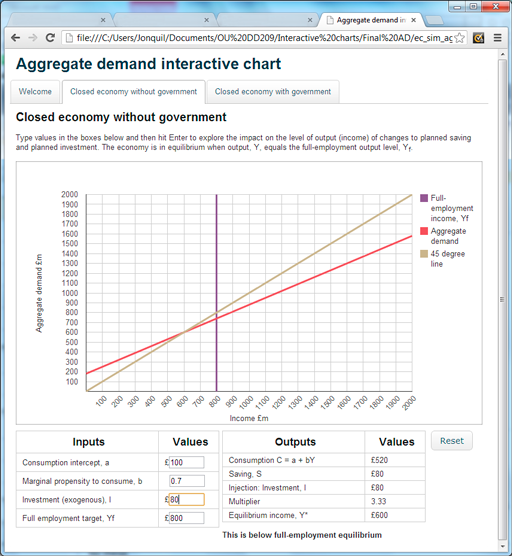
The figure is a screenshot of the Aggregate Demand Interactive chart.
It shows the answer to Activity 8 question (a) which asks you to input specified values for exogenous consumption, the marginal propensity to consume, investment and the full employment equilibrium.
The diagram shows what the Aggregate demand chart should look like with these values inputted. Above the chart, it says that this is for a closed economy without government.
Aggregate Demand in millions of £ (£m) is shown on the vertical axis, starting at 0 and rising to 2000, at intervals of 100. Income in £m is on the horizontal axis, starting at 0 and rising to 2000 at intervals of 100.
The 45 degree line is shown in brown. The Aggregate Demand function is shown in red. The full employment equilibrium level is shown at a level of income of £800m. A vertical full employment income line is drawn in purple from this point to intersect the 45 degree line.
Just on the right of the chart is a legend showing the colour coding for the three lines. This legend tells us that the full employment income is denoted as Yf.
The AD line intersects the 45 degree line at an income level Y of £600m, below the full employment level of income Yf.
Task B
(b) State by how much AD falls short of the level required to produce the full-employment income of £800.
Answer
In this example, aggregate demand at any level of income is calculated using the equation:
AD = 180 + 0.7Y
So, if equilibrium income (Y) were to be £800:
AD = 180 + 0.7 x 800 = 180 + 560 = 740
which would fall short of income by £800 – £740 = £60.
Policy intervention will be needed to give a stimulus that initially raises aggregate demand by £60.
Task C
(c) Assume that the required stimulus is going to take the form of policy to increase investment. Use the tool to change investment by the amount you calculated in (b).
Answer
If you increased investment by 60, the new amount of investment should be 140. The outputs and chart from the tool should now look like this:
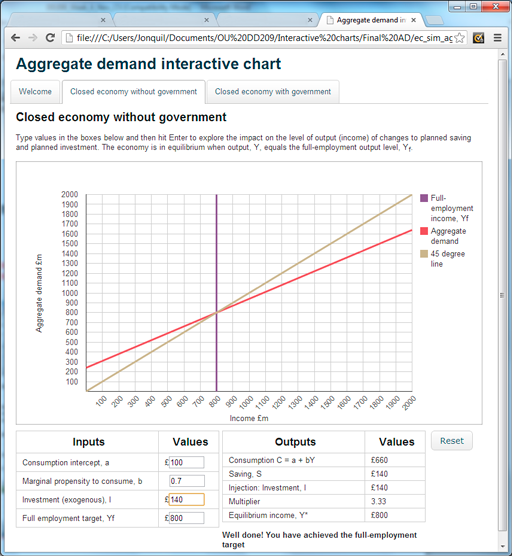
The figure is a screenshot of the Aggregate Demand Interactive chart.
It shows the answer to Activity 8 question (c). Above the chart, it says that this is for a closed economy without government.
Aggregate Demand in millions of £ (£m) is shown on the vertical axis, starting at 0 up to 2000, at intervals of 100. Income in £m is on the horizontal axis, starting at 0 and rising to 2000 at intervals of 100.
The 45 degree line is shown in brown. The Aggregate Demand function is shown in red. The full employment equilibrium level is shown at a level of income of £800m. A vertical full employment income line in purple is drawn from this point to intersect the 45 degree line. The legend on the right of the chart shows the colour coding for the lines and tells us that full employment income is denoted as Yf.
The AD line intersects the 45 degree line at an income level Y of £800m, which equals the full employment level of income Yf.
Task D
(d) Describe what has happened to the equilibrium level of income as a result of the change you made in (c).
Answer
The economy is now in equilibrium at an income of £800 which is the full-employment level of income.
6 The aggregate demand model with government and fiscal policy
The previous sections introduced some of the arguments made by Keynes as to why capitalist economies can become stuck in positions of high unemployment. Though there may be a quite stable relationship between income and consumption, private investment can languish at levels that are insufficient for full employment. The government may choose to fill the gap: an active state sector for Keynes can iron out the vagaries of volatile private investment spending. For the macroeconomy, the key problem is the failure to reach full employment owing to a shortfall in aggregate demand, and the component of aggregate demand that is most frequently insufficient is investment demand.
This section introduces some of the policy tools that are available to a government department responsible for coordinating public finance – in the UK called Her Majesty’s (HM) Treasury. The Treasury is the coordinating body that allocates government spending (for transport, health, education, defence, and so on) and oversees the collection of taxes (such as Income Tax, Value Added Tax (VAT) and excise duty on petrol). When the government uses these spending and revenue raising activities to stabilise the economy, this comes under the purview of fiscal policy, which is the main focus of this section.
It should be emphasised that the role of fiscal policy is highly contested by economists and policymakers. From a Keynesian perspective, the government has a vital role in stabilising the macroeconomy, because there is no automatic mechanism through which the economy can recover from a recession. For critics of the Keynesian approach, however, the government should leave the private sector alone: it is government intervention that prevents the private sector from bringing about full employment equilibrium. The purpose of this section is to introduce and explore the Keynesian point of view. Some critiques of the Keynesian approach are also explored.
Section 6 introduces government expenditure and shows its full potential Keynesian impact. Not only can government spending generate demand for goods and services that may encourage firms to employ more people, but also its effect on income can be much greater than the initial stimulus. The section then focuses on the more tricky issue of how government spending is financed through taxation. It also considers how the cutting of taxes can help to stimulate aggregate demand. These two dimensions of fiscal policy are brought together in a consideration of fiscal stabilisers. The government can use fiscal policy in a discretionary way to actively intervene in times of crisis; it can also allow what are known as automatic stabilisers to smooth out economic fluctuations. Finally, the section examines a big policy issue that has dominated public policy-making in recent years – the issue of budget deficits.
6.1 Government expenditure (1)
In modern capitalist economies, the public sector plays a key role. In the UK, total government expenditure was forecast to be £683 billion in the financial year 2012–13, which is 43.4% of Gross Domestic Product (GDP) (HM Treasury, 2012). Government activities range across all spheres of the economy, from the provision of social protection (such as benefits and pensions) to health, transport and defence. A breakdown of government spending is provided in Figure 13. Social protection is clearly the largest category, with health and education the next largest categories.
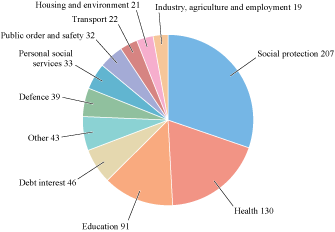
This diagram is a pie chart, divided into eleven sections showing the breakdown of government spending. The data source is HM Treasury, 2012, page 1, chart 1.
The largest category is Social protection, at £207bn.
Then, moving clockwise the pie chart presents the other categories of spending in descending order:
Health 130; Education 91; Debt interest 46; Other 43; Defence 39; Personal social services 33; Public order and safety 32; Transport 22; Housing and environment 21; Industry, agriculture and employment 19.
Social protection includes the provision of transfer payments, where there is a transfer from the government to individuals that is not made in return for any services. Old-age pensions and unemployment benefit are examples of transfer payments. If, for example, a refuse collector becomes unemployed and receives unemployment benefit, this benefit is a transfer payment, since he is providing no direct service. By contrast, if the refuse collector is in work and paid a wage by the government, that is government spending on the service of emptying bins.
As you will see in the analysis that follows, some economists and policymakers may regard government expenditure as unproductive and wasteful, a drain on the wealth-creating private sector, even when it takes the form of expenditure on goods and services. For Keynes, however, government expenditure represents a powerful lever for intervention when the private sector fails to generate sufficient demand.
Keynes formulated his ideas during the 1920s, making a number of attempts to persuade the UK government to increase its expenditure in order to boost aggregate demand. Although the wartime British Prime Minister, David Lloyd George, had promised that there would be ‘jobs for the boys’ when soldiers came home after the First World War, this did not materialise. High unemployment in the 1920s led to the decline of the Liberal Party, of which Lloyd George was the leader, and its replacement by James Ramsay MacDonald’s Labour Party as the main alternative to the Conservatives – a position from which the Liberal Party (calling itself the Liberal Democrats at the time of writing) has never recovered.
In one final push, in the 1929 General Election, Lloyd George tried to regain his supremacy over the ‘spectre’ of socialism. Under his auspices, the Liberal Party published a pamphlet entitled ‘We can conquer unemployment’. He also marshalled the support of Keynes to develop his party’s manifesto. In his address to Liberal candidates on 1 March 1929, Lloyd George pledged: ‘If the nation entrusts the Liberal Party at the next General Election with the responsibilities of government, we are ready with schemes of work which we can put immediately into operation, work of a kind which is not merely useful in itself but essential to the well-being of the nation’ (Keynes, 1972, p. 88).
The Conservative-dominated press rubbished these claims as the fantasies of a Welsh windbag, being far too optimistic and not based on common sense. Keynes piled in, in a pamphlet entitled ‘Can Lloyd George do it?’, written with a politician, Hubert Henderson. This aimed to supplement and to answer criticisms of the Liberal Party pamphlet mentioned above. Keynes wrote:
The Liberal Policy is one of plain common sense. The Conservative belief that there is some law of nature which prevents men from being employed, that it is ‘rash’ to employ men, and that it is financially ‘sound’ to maintain a tenth of the population in idleness for an indefinite period, is crazily improbable – the sort of thing which no man could believe who had not had his head fuddled with nonsense for years and years.
In answer to the objections raised by the then Conservative Prime Minister Stanley Baldwin, Keynes observed: ‘Mr Baldwin and his colleagues are not more capable of expounding the true economic science of the matter than they would be of explaining to you the latest propositions of Einstein’ (Keynes, 1972, p. 91).
6.2 Government expenditure (2)
Lloyd George’s £300 million programme had three main planks:
- Transport: To modernise the rail and transport system, including electrification of railways and particular emphasis on roads, since they were under the direct control of the government sector. A capital sum of £145 million for road replacement and extension over two years was proposed.
- Housing: To build 200 000 houses a year: a million houses over a ten-year period would provide for slum clearance and reduction of overcrowding. Unemployed building workers would be set to work on these road- and house-building programmes.
- Small projects: A host of other small developments, such as telephone development and land drainage. All this required was a Treasury green light for ‘innumerable schemes pigeonholed in government offices’ (Keynes, 1972, p. 99).
Similar public spending programmes were announced throughout the world in response to the economic crisis of 2008. In the USA, President Obama introduced the American Recovery and Reinvestment Act of 2009, which resulted in US$831 billion of government spending on items such as infrastructure, health and education. In the same year, Australia launched a ‘Nation Building and Jobs Plan’, costing AUS$42 billion, on items such as building local community infrastructure and refurbishing schools – estimated to create 90 000 jobs and to boost annual GDP by 1% after two years (Vu and Tanton, 2010, p. 129).
The official UK government position in 1929, however, as summarised by the Balfour Committee on Industry and Trade, was that a programme of this kind ‘could not provide employment in their own trades for any considerable number of unemployed persons’ (quoted in Keynes, 1972, p. 100). Against this pessimistic assessment, Keynes stated the Liberal position that ‘each million pounds spent annually on road improvements would employ, directly or indirectly, 5,000 workpeople’ (Keynes, 1972, p. 103). Keynes pointed out that this is four times higher than the assessment given by the Balfour Committee. The committee had failed to take into account the indirect employment effects of the road-building programme.
This error was eventually admitted, after questioning in the House of Commons, by the Conservative Minister of Transport, Colonel Ashley. After noting that for each £1 million of road-building expenditure employment ‘might be increased to as much as 2,500’, Colonel Ashley conceded that for each of these direct jobs ‘another man would be indirectly employed in producing and transporting materials in other ways, and this assumption may not be unreasonable’ (quoted in Keynes, 1972, p. 104). There would be additional indirect employment created in the production and transport of the tarmac and other materials that are required for road-building, leading to a further possible 2500 jobs.
Activity 9
As reported above, the official estimate was that 5000 jobs were created by each £1 million of expenditure. Directly and indirectly, how many jobs could have been created by the £72.5 million earmarked for the first year of the Lloyd George road-building programme?
Answer
The total impact would have been 362 500 jobs (72.5 × 5000) in the first year – a substantial hole in the more than one million unemployed in 1929, created just by road-building. For Keynes, this was not a Lloyd George fantasy; it was confirmed by the government itself after intensive pressure and analysis.
In Keynes’s view the Balfour Committee had failed to take account of something much more significant than the indirect employment to which the Liberal Party’s pamphlet and statements had drawn attention. By putting unemployed people into work both directly and indirectly, an initiative such as the road-building programme would increase what he called ‘effective purchasing power’. Newly employed workers in the road-building industry would spend part of their wages on a wide range of goods and services, providing increased income and creating further new jobs in other parts of the economy. This in its turn would lead to further spending, more income and more new jobs. In this way there would develop a considerable ripple in the form of successive rounds of spending: ‘the forces of prosperity [would] work with a cumulative effect’ (Keynes, 1972, p. 106).
This notion of cumulative increases in demand and hence in income and output is so central to Keynes’s system that it is worth quoting at some length from the pamphlet that he wrote with Henderson:
It is not possible to measure effects of this character with any sort of precision, and little or no account of them is, therefore, taken in ‘We Can Conquer Unemployment’. But, in our opinion, these effects are of immense importance. For this reason we believe that the effects on employment of a given capital expenditure would be far larger than the Liberal pamphlet assumes.
By the time Keynes published The General Theory of Employment, Interest and Money in 1936, he had refined his thinking about these cumulative effects and showed how they might be estimated using the marginal propensity to consume.
The analysis that follows in the next section shows how the impact of government expenditure on output and employment can be modelled, using the aggregate demand framework.
6.3 Government expenditure (3)
To model the impact of government expenditure, the first step is to introduce a new term G to represent planned government spending. Whereas earlier it was assumed that the economy consisted only of private agents (households and firms), the government sector (also called the public sector) is now included in the model. Like private investment, government spending is treated in this model as exogenous.
It is important to note that the portion of government spending that takes the form of transfer payments is not included in G since it adds nothing directly to the demand for goods and services. However, as you will see, transfer payments do affect the household consumption component of aggregate demand and income.
Aggregate demand (AD) in the extended model consists of planned consumption (C ) and planned investment (I ), as before, with an additional term (G ) representing planned government spending:
AD = C + I + G
Some elements of spending may form part of I at one time in history and part of G at another. For example, investment in railways in the 1920s would be categorised as part of private investment (I ), whereas after railway nationalisation in the 1940s such investment would be categorised as part of government spending (G ). Keynes made the point that expenditure by the government on roads was equivalent to private investment in the railways. In fact, since in times of stagnation, the private sector might be reluctant to invest, government spending can be required to fill the gap – not just to boost aggregate demand, but also to provide vitally needed infrastructure investment.
This new role for government spending can now be shown in the aggregate demand diagram (Figure 14). In this diagram, government spending (G ) and investment (I ) are shown as exogenous elements of aggregate demand, unaffected by changes in income. The combined total of government spending and private investment (I + G ) is represented by a horizontal line. Also exogenous is the intercept of the consumption function (a). You may recall from earlier sections that the slope of the consumption function is represented by the coefficient b.

This diagram has Aggregate Demand (AD) on the vertical axis and Income (Y) on the horizontal axis.
A solid line at a 45 degree angle is drawn upwards from the origin.
From a short way up the vertical axis, a horizontal line is drawn. This is labelled I+G.
A little above this horizontal line, from point ‘a’ on the vertical axis, a straight line is drawn upwards, with a shallower slope than the 45 degree line. This is labelled ‘Consumption function, C=a+bY.’
Somewhat above the consumption function, and parallel to it, is a line drawn from a point on the vertical axis a+I+G. This line is labelled ‘Aggregate Demand schedule, AD=C+I+G.’
To derive the new aggregate demand schedule, the horizontal line for combined investment and government spending can be added to the consumption function. The new aggregate demand schedule AD = C + I + G has an intercept a + I + G and the same slope (b) as the consumption function.
6.4 Government expenditure (4)
The aggregate demand model can also be used to illustrate what might happen under an increase in government spending, as shown in Figure 15. Let government spending increase by £300 million – money that could be spent along the lines of the 2009 Obama Recovery Act or the 1929 Lloyd George three-point plan. This is shown by an upward shift of the intercept of the aggregate demand schedule by £300 million due to an increase in government spending from G0 to G1. It is referred to in modern economics as a fiscal stimulus. Using one of its key fiscal powers – the ability to carry out expenditure – the government is able to boost aggregate demand.
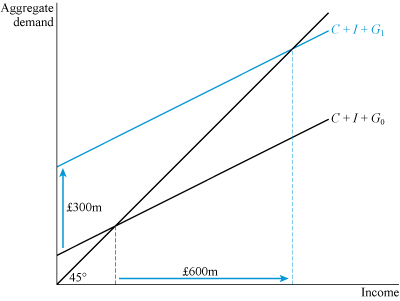
This diagram has Aggregate Demand (AD) on the vertical axis and Income (Y) on the horizontal axis.
A solid line at a 45 degree angle is drawn upwards from the origin.
From a short way up the vertical axis, a straight line is drawn, sloping upwards at an angle shallower than 45 degrees. This line is labelled as C+I+G zero and it intersects the 45 degree line quite low down. A dashed line is drawn from this intersection point down to the horizontal Income axis.
From a point about half way up the vertical axis, a second straight line is drawn. This is parallel to the first one and is labelled as C+I+G1. This intersects the 45 degree line much further along. A dashed line is drawn from this intersection point down to the horizontal Income axis. This point is much further along the axis than the point from the first aggregate demand schedule.
There are two arrows in blue showing the direction of change. One arrow points upward along the vertical axis, from the lower to the higher aggregate demand schedule. This has £300m written beside it.
Another arrow runs to the right along the horizontal axis, from the lower point on the axis to the higher point. This has £600m written beside it.
Activity 10
By how much does income increase in Figure 15 under a £300 million fiscal stimulus?
Answer
Figure 15 shows, for this particular example, that the increase in income is £600 million – which is double the fiscal stimulus. In this example an extra £1 million of income is created for each £1 million of fiscal stimulus – an extra £1 million of output that could lead to double the number of jobs initially created directly and indirectly by the stimulus.
This ‘double your money’ insight can now be explained by breaking down the effect of the stimulus into a series of rounds, as shown in Table 1. In Round 1, the change in income is equal to the fiscal stimulus of £300 million. Round 2 then depends on how much of this income is spent.
| Round | Change in income (£ m) | Cumulative change in income (£ m) |
|---|---|---|
| 1 | 300.00 | 300.00 |
| 2 | 150.00 | 450.00 |
| 3 | 75.00 | 525.00 |
| 4 | 37.50 | 562.50 |
| 5 | 18.75 | 581.25 |
| 6 | 9.38 | 590.63 |
| 7 | 4.69 | 595.32 |
| 8 | 2.35 | 597.67 |
| 9 | 1.18 | 598.85 |
| 10 | 0.59 | 599.44 |
It is modestly assumed in Figure 15 that the marginal propensity to consume – the slope (b) of the consumption function – is equal to 1/2. This means that in Round 2, half of the initial increase in income from the fiscal stimulus will be spent on consumption, as shown by the £150 million change in income. By Round 2 it therefore follows that there is a cumulative increase in income of (i) the initial direct increase in income of £300 million, and (ii) the additional indirect impact of £150 million. These two items add up to a cumulative income of £450 million in Round 2.
This process continues in Round 3, with half of the previous round’s change in income (£150 million) spent as consumption: a new change in income of £75 million. In each round, half of the previous round’s change in income is spent; these rounds continue indefinitely. By Round 10, however, the change in income has fallen to just over half a million pounds, and the cumulative change approaches its final value of £600 million – the doubling of income that is illustrated in Figure 15. Even by Round 3, 87.5% of the eventual cumulative change in income has occurred, so although in theory the expansionary effect may take many rounds and a great deal of time to work itself out, the main impact is felt quite quickly.
Figure 16 shows the first three rounds. In Round 1, the injection of government demand leads to an upward shift of the aggregate demand schedule by £300 million. Initially, this planned aggregate demand exceeds current output. At the outset, in Round 1, only £200 million worth of output (income) is being produced, yet now the total aggregate demand is £500 million. If the key assumption is now made that there is sufficient spare capacity – idle factories or machinery, and a pool of unemployed workers – then in response to the additional demand, output can be increased by £300 million, as depicted by the first horizontal arrow.
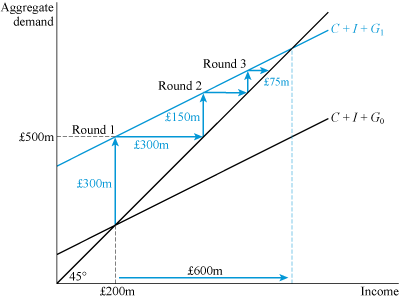
This diagram has Aggregate Demand (AD) on the vertical axis and Income (Y) on the horizontal axis.
A solid line at a 45 degree angle is drawn upwards from the origin.
From a short way up the vertical axis, a straight line aggregate demand schedule is drawn, sloping upwards. This is labelled as C+I+G zero. This has a shallower slope than the 45 degree line and intersects the 45 degree line quite low down. A dashed line is drawn from this intersection point vertically down to the £200m point on horizontal Income axis.
From about half way up the vertical axis, a second aggregate demand schedule is drawn. This is parallel to the first one. This is labelled as C+I+G1. This intersects the 45 degree line much further along the line. A dashed line is drawn from this intersection point down to the horizontal Income axis. This point is much further along the axis than the point from the first aggregate demand schedule.
The diagram shows three rounds of the fiscal stimulus process, via a series of vertical and horizontal arrows that form three steps. The arrows decrease in length as we move from left to right.
The first vertical arrow runs from the point of intersection between the lower aggregate demand schedule and the 45 degree line directly up to the higher aggregate demand schedule. This has ‘£300m’ written beside it. . Above the point where the arrow hits the higher aggregate demand schedule is written ‘Round 1’.
From the point where the vertical arrow hits the higher aggregate demand schedule, an arrow runs horizontally right to hit the 45 degree line. This arrow has ‘£300m’ written beside it. Another arrow runs vertically up from this point on the 45 degree line up to the higher aggregate demand schedule, with ‘£150m’ written beside it. Above this point is written ‘Round 2’.
From this point on the higher aggregate demand schedule an arrow runs horizontally right to the 45 degree line, and then vertically up to the higher aggregate demand schedule. This has ‘£75m’ written beside it and above is written ‘Round 3’. A final short arrow is drawn horizontally to the 45 degree line. This is just short of the equilibrium position, where the higher aggregate demand schedule intersects the 45 degree line.
There is one further line on the diagram. From the point where the first vertical arrow hits the higher aggregate demand schedule, a dashed line is taken horizontally left to the vertical axis, to a point labelled ‘£500m’
In Round 2, the new stimulus of £150 million, as shown in Table 1, comes into play. Once again aggregate demand exceeds current output, this time by £150 million, and a new horizontal line indicates the increase in output to match this demand. Similarly, in Round 3 the impact of the £75 million boost in aggregate demand is matched by a £75 million boost in output. These rounds eventually peter out, as in Table 1, when both aggregate demand and aggregate output have increased by £600 million.
The process, illustrated in Table 1 and in Figure 16 is referred to by Keynes as the multiplier process, since the impact of the fiscal stimulus is multiplied throughout the economy. The multiplier captures the cumulative effect of a change in spending on income. The change represented here is a change in government spending, but the model could also be used to show the effect of a change in another exogenous factor such as investment.
Let Δ denote the amount by which a variable might change. The multiplier can be expressed in mathematical terms as the ratio of the eventual change in income (ΔY ) to the initial change in spending that caused it (ΔG ):
Activity 11
Calculate the size of the multiplier when a £300 million fiscal stimulus increases income by £900 million.
Answer
In this example, ΔY = 900 and ΔG = 300; hence the multiplier is equal to 900/300 = 3. Since the multiplier is 3, the fiscal stimulus increases income by a threefold amount.
The size of the multiplier depends on the marginal propensity to consume, as explored in the box below. It has a simple formula:
where b is the marginal propensity to consume. In the example in Table 1, the propensity to consume is equal to 1/2. Hence
The eventual doubling of income in the multiplier process is captured in total by this formula for the multiplier.
Since the concept of the multiplier emerged in the 1930s, economists have used statistical methods to estimate its empirical size. There is, however, considerable uncertainty as to the multiplier’s precise value. At the top end of estimates of the size of the multiplier, Eggertsson (2006) finds the multiplier to be as high as 3.8. In a more recent survey, Ramey (2011) pronounces that the ‘range of plausible estimates for the multiplier … is probably 0.8 to 1.5’. Due to the uncertainty involved, however: ‘Reasonable people could argue that the multiplier is 0.5 or 2.0’. A multiplier of 0.5 would mean, for example, that £1 billion of spending leads to only half that increase in income; whereas a multiplier of 2.0, as you have seen, would mean a doubling of income.
One problem is that estimates tend to be based on observations made during periods of economic growth, yet multipliers are most relevant in times of contraction. Larry Summers, a leading US economist who has advised Presidents Clinton and Obama, has been very cautious about the impact of fiscal stimuli but argues that the specific circumstances of the economic crisis of 2008 would point to a multiplier nearer to the top end of Ramey’s range of estimates (DeLong and Summers, 2012).
Deriving the formula for the multiplier
To derive the formula for the multiplier, consider two equations.
First, consider an income equation showing points of equilibrium between income and aggregate demand (points where the aggregate demand schedule intersects the 45-degree line):
Second, consider the consumption function, showing the relationship between planned consumption and income:
Substituting the consumption function into the income equation gives a new expression:
Now notice that on the right-hand side there is an expression that relates consumption to income. I can now subtract this term from both sides of the expression:
Collecting 1 and b in a bracket:
Dividing both sides of this equation by (1 − b), this term cancels out on the left-hand side, to leave:
This gives a multiplier relationship between income and exogenous spending
The expression is the multiplier below:
6.5 Government revenue and taxation
This section examines the income side of the public sector accounts. The main source of income for the government is the collection of taxes, which in the tax year 2012–13 was estimated to make up 36.1% of GDP in the UK (Office for Budget Responsibility, 2012, p. 100).
Taxation and the circular flow of income
Figure 17, below, gives a breakdown of tax receipts, showing the percentages of GDP allocated to the main types of taxation levied by the UK government. The largest part of the tax take (17% of GDP) is contributed by Income Tax and National Insurance Contributions (NICs). These are direct taxes, payable by the individuals who receive income and by their employers. People who work for an employer have Income Tax deducted directly from their pay each month; for the self-employed, two advance payments are usually made each financial year. Corporation Tax, which makes up 2.4% of GDP, is a direct tax paid by companies directly out of their income, as are Capital taxes (1% of GDP) paid by individuals and companies, charged on increases in the value of financial or physical assets.
The second major source of income is VAT, making up 5.8% of GDP. This is charged on purchases of goods and services. When you buy a car, for example, 20% of the cost will be contributed as VAT. In this case it will be the company that sells you the car that pays this tax over to the government, not you personally. The tax is paid via an intermediary, and can hence be categorised as an indirect tax, as can fuel excise duties, paid via your garage when you buy petrol.
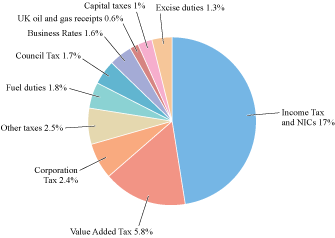
This diagram is a pie chart, divided into ten sections. The data source is the Office for Budget Responsibility, 2012, page 100, Table 4.6.
The largest category of tax is Income Tax and National Insurance Contributions, at 17% of GDP.
Then, moving clockwise the pie chart presents the other categories of tax: Value Added Tax 5.8%; Onshore corporation tax 2.4%; Other taxes 2.5%; Fuel duties 1.8%; Council tax 1.7%; Business rates 1.6%; UK oil and gas receipts 0.6%; Capital taxes 1%; Excise duties 1.3%.
Taxation is a key component of fiscal policy, alongside government spending decisions, which were considered in the previous section. In a period of economic recession, the government can choose to stimulate aggregate demand by either boosting government spending or cutting taxes. This can be illustrated using the circular flow diagram (Figure 18).
Activity 12
Compare Figure 18 with the circular flow diagram represented in Figure 19.
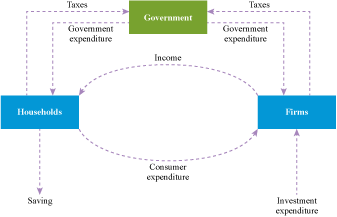
The diagram shows three sectors of the economy, with various money flows shown as moving between them. The money flows are shown as dashed arrows, indicating the direction of flow.
The Household sector is in a blue rectangular box on the left of the diagram; the Firms sector is also in a blue rectangular box is on the right of the diagram; and the Government sector is in a green rectangular box which lies above the other two and in the centre.
From households, consumer expenditure flows to firms and taxes flow to government. There is also a flow of savings from households and this is shown by an arrow pointing out of the circuit of flows – indicating a leakage out of the circular flow.
From firms, income flows to households and taxes flow to government. There is also a flow of investment expenditure to firms. This flows in from outside the circuit of flows – indicating an injection into the circular flow.
From government, government expenditure is shown flowing to both households and to firms.

Flows of money are shown by dashed lines with directional arrowheads.
A flow labelled ‘Income’ runs from Firms to Households.
A flow labelled ‘Planned Consumption’ runs from Households to Firms.
A dashed line pointing vertically down from Households is labelled ‘Saving’.
A dashed line pointing vertically up to Firms is labelled ‘Planned Investment’.
Discussion
You will see that in Figure 18 a new box has been added to show the government sector. As you have seen, government expenditure provides an injection to the circular flow of income, as indicated by the arrows in Figure 18. For example, if the government-run National Health Service hires more doctors, there is a flow of money to the household sector.
Tax receipts are a leakage from the circular flow of income. For example, out of incomes received by households, a part of these are paid in Income Tax, which leaks out of the household sector into the government sector. A reduction in Income Tax would put money into the pockets of households, which could stimulate aggregate demand. Similarly, Corporation Tax is represented here by a flow of money from the firms to the government. A reduction in Corporation Tax could stimulate the expenditure plans of firms.
The leakage of taxes means that there is another important difference between the two models. In the model without government expenditure (Figure 19), planned consumption is the proportion of income left after saving had been deducted; in Figure 18, consumer expenditure is the proportion of income left after saving and also taxes have been deducted.
A tax-modified multiplier
To explore how taxation works as a fiscal policy tool, a modification can be made to the aggregate demand model and multiplier. To keep things simple, we will assume a tax rate for the whole economy, capturing the proportion of income raised from tax. The coefficient t can be defined as the rate of tax – i.e. the proportion of national income levied by tax. Hence the total revenue received by the government from tax (T) is
T = tY
With a national income (Y ) of £1200 billion, for example, and a tax rate of 1/3, the total tax revenue will be £400 billion.
The amount of income available for consumption (often referred to as disposable income) is now equal to income (Y ) minus taxation (tY ):
Y − tY = (1 − t )Y
It therefore follows that the tax-modified consumption function is
C = a + b(1 − t )Y
This tax-modified consumption function, shown in Figure 20, has a shallower slope than the consumption function shown in Figure 14. This new slope is represented by a new (tax-modified) marginal propensity to consume b(1 − t ).

This diagram has Aggregate Demand on the vertical axis and Income on the horizontal axis.
A solid line slopes upwards from the origin at an angle of 44 degrees.
From a point a short way up the vertical axis, a horizontal line is drawn. This is labelled ‘I+G’.
From a point a little higher up the vertical axis, labelled ‘a’, a solid straight line slopes upwards diagonally to the right. This line is labelled ‘Consumption function’ and has the equation C=a+b(1-t)Y. It has quite a shallow slope.
Higher up the vertical axis, from a point labelled ‘a+I+G’, there is another upward sloping line, parallel to the consumption function. This line is labelled ‘Aggregate Demand schedule’ and has the equation AD= a+b(1-t)Y+I+G
We can now consider the effect of modelling tax on the structure of the multiplier, which was shown earlier in this section to take the form 1/(1 − b). It intuitively follows that instead of having a denominator 1 − b, the tax-modified multiplier has a denominator 1 − b(1 − t ). The marginal propensity to consume (b) is no longer the only determinant of the value of the multiplier. We now also need to take account of the leakage of tax, as shown in Figure 20, and the new multiplier is
Activity 13
Suppose that the marginal propensity to consume (b) is equal to 0.75 and the tax rate (t) is 0.2. Calculate the size of the tax-modified multiplier.
Answer
This calculation involves carrying out a number of steps.
Step 1: Calculate 1 − t = 1 − 0.2 = 0.8
Step 2: Calculate b(1 − t) = 0.75 × 0.8 = 0.6
Step 3: Calculate 1 − b(1 − t) = 1 − 0.6 = 0.4
Step 4: Calculate 1/(1 − b(1 − t)) = 1/0.4 = 2.5
The tax-modified multiplier has a value of 2.5. Without the leakage of taxation, using the calculation 1/(1 − b) = 1/(1 − 0.75), the multiplier would be equal to 4. So instead of a fourfold increase in income, in response to a fiscal stimulus, only a 2.5-fold increase is generated once the leakage of tax is taken into account.
A tax-cutting fiscal stimulus
It is now possible to explore the impact of cutting the tax rate from t0 to t1. Since a higher proportion of income is now available for consumption (a reduced leakage of taxes in the circular flow of income), this provides a boost to aggregate demand. This tax reduction will be modelled in order to illustrate a key fiscal policy arm available to policymakers: the manipulation of taxation in order to stimulate aggregate demand.
In response to a tax cut, the initial reduction in tax payments ΔT is equal to
ΔT = (t0 − t1)Y0
where Y0 is the level of income before the tax change. The change to tax receipts depends on the difference (t0 − t1) between tax rates before and after the change.
Now let the initial level of income (Y0) be £600 million, and let the initial tax rate (t0) be 0.1. Suppose that the tax rate falls to t1 = 0.05 (only 5% rather than 10% of national income is taken in tax). Hence the initial reduction in tax receipts is
ΔT = (0.1 − 0.05) × 600 = 0.05 × 600 = £30 million
The reduction in the tax rate to 5% generates a £30 million cut in total tax receipts. This means a £30 million increase in disposable income.
The ‘windfall’ increase in disposable income will lead to an increase in consumption spending, but this increase will be less than the full £30 million. Assuming that the marginal propensity to consume is 0.8, and remains at this value, households will spend only 80% of their additional income. Instead of stimulating aggregate demand, 20% of the tax windfall leaks into savings accounts in banks and building societies. Hence the stimulus to aggregate demand is
b ΔT = 0.8 × £30 million = £24 million
Households will choose to save £6 million of the £30 million tax windfall, and spend £24 million on additional consumption. So aggregate demand is boosted by £24 million.
In addition, the fall in the tax rate increases the value of the multiplier:
The reduction in the tax rate increases the multiplier from 3.57 to 4.17. The combined effect of these two changes is an increase in income of
4.17 × £24 million = £100 million
Activity 14
For a multiplier of 3.57 (as in the above example, with initial tax rate 10% and a marginal propensity to consume of 0.8), calculate the multiplier impact on income of an increase in government spending ΔG = £30 million.
Answer
This activity allows you to compare the above tax cutting example with a fiscal stimulus based on increased government spending. With a multiplier of 3.57, the final increase in income from the increase in government spending is 3.57 × £30m = £107.1 million. Even without the benefit of an increase in the multiplier, an increase in government spending delivers a higher boost to income than an equivalent tax cut: £7 million more in this example.
The key difference between these two types of fiscal policy is the leakage of part of the tax cut into saving. In the current example, the government spends the full £30 million, whereas households spend only £24 million of the £30 million windfall and save the rest. The exact outcome of the comparison does, of course, depend on the values of b and (t0 − t1). The effect of a tax cut will be enhanced if there is a very high marginal propensity to consume, so that most of the windfall is spent, and also if there is a substantial increase in the value of the multiplier owing to a large fall in the percentage tax rate.
Keynes was not very keen on stimulating aggregate demand through tax cuts. As shown by Brown-Collier and Collier (1995), he cautioned that tax cuts do not provide any future benefits to the economy; he also thought that it would be difficult to persuade the public that tax cuts should be reversed once they became established. Further issues relating to these two types of fiscal policy are considered in the analysis that follows.
6.6 Stabilisation policy
You have seen that fiscal policy can be used, in times of economic crisis, to stimulate aggregate demand either by increasing government spending or by reducing taxes. As part of the Roosevelt New Deal, and more recently by President Obama in the USA, these types of fiscal stimulus were used to stabilise the economy in response to problems of severe contraction in national income.
In the golden years of Keynesian economics, however, during the 1950s and 1960s – when the UK Conservative Prime Minister Harold Macmillan pronounced ‘You’ve never had it so good’ – governments did not have to deal with such crises. The news programmes were not reporting people queuing outside banks (as in the 2007 collapse of Northern Rock) or the unemployed queuing outside job centres. Far from there being a problem of unemployment, there was a shortage of labour, which encouraged population movements such as the Windrush migration from the Caribbean to the UK.
For most of this early postwar period, capitalist economies enjoyed continued growth and mild business cycle fluctuations. In such circumstances, there would be repeated periods of boom (high growth) and slowdown (low growth); governments would see their main responsibility as smoothing out the peaks and troughs of the cycle, an approach referred to as ‘fine-tuning’.
This period of sustained growth was attributed in part to the benefits of Keynesian intervention – in sharp contrast to the plethora of disasters that befell the world economy in the 1920s and 1930s. Postwar governments bought into the Keynesian idea that it was their responsibility to manage aggregate demand. In the USA, during the 1960s, the phrase ‘We are all Keynesians now’ (Friedman, 1965) was even used by the right-wing president, Richard Nixon. In the UK, successive Conservative and Labour Chancellors of the Exchequer (Hugh Gaitskell and Rab Butler) were arguably so close to each other that their names were combined in an approach called ‘butskellism’: where the mixed economy, consisting of a viable private sector and a large welfare state, were championed. It was not until the 1970s, when problems of inflation reared their ugly head, that this postwar Keynesian consensus fell apart.
Two main types of fiscal policy were developed during this period. First, governments can use discretionary stabilisers, actively adjusting fiscal policy in response to boom or slowdown in economic activity. If the economy is overheating (growing too fast), for example, the government might decide to increase tax in order to temper aggregate demand – and vice versa under a slowdown. As you saw earlier in this section, the impact of using this type of discretionary stabiliser will tend to be amplified by the multiplier effect. Since for Keynes, in general, the economy is likely to operate at output levels less than full employment, discretionary stabilisers are required to snuff out high unemployment.
Yet if the public sector is sufficiently large, in a butskellite type mixed economy, then its very presence can dampen down the business cycle. If growth slows, for example, and there is an increase in unemployment, then under a welfare state workers will receive unemployment benefit. So although they are not earning the wages that they earned under employment, unemployed workers are still able to consume, albeit at a lower level. Such a transfer payment can be thought of as a negative tax, affecting consumer expenditure in a similar way to a tax cut.
This second type of fiscal policy is referred to as an automatic stabiliser – a fiscal response to a slowdown in economic activity that happens without any active decisions on the part of the government. Governments, of course, have to choose to keep the system in place to facilitate this automatic spending, but they do not have to actively direct the spending from day to day.
At the same time as government transfer payments will automatically increase during a slowdown, tax revenue will fall. At lower levels of income, tax receipts such as those out of income (Income Tax) and profits (Corporation Tax) will fall. The welfare and tax systems in the economy create their own adjustments in aggregate demand, making the slowdown less pronounced than it would have been without the state sector. Similarly, in an upturn, as incomes increase so does the proportion of income directed to tax.
In recent years, policymakers have found these stabilisers to be very attractive, since they can smooth out both peaks and troughs of the business cycle. Tax-based automatic stabilisers provide a symmetric approach to fiscal policy, with attention paid to both sides of the business cycle. In the early 2000s, this was the official position of the European Central Bank (ECB): ‘Automatic stabilisers are the appropriate way to stabilise output, as they have foreseeable, timely and symmetrical effects […] there is normally no need to engage in additional discretionary fiscal policy-making for stabilisation purposes’ (ECB, 2002, pp. 41, 46, quoted by Lodewijks, 2009, p. 3).
This contrasts sharply with the Keynesian consensus of the 1960s, when it was thought that automatic stabilisers were insufficient to manage the business cycle. US President John F. Kennedy argued in 1962 for a ‘shelf of public works’ that could be introduced if unemployment rose – together with increases in the period for which unemployment benefits would be paid (Lodewijks, 2009, p. 4). The problem, for the USA, is that state spending has tended to constitute a smaller part of national income than in European countries such as the UK, so automatic stabilisers do not have as much impact.
Despite its weaker automatic stabilisers, the USA enjoyed a stronger recovery than the UK in the period immediately following the economic crisis of 2008. Adam Posen, a member of the Bank of England’s Monetary Policy Committee, has explained this recovery as being in part due to differences in the discretionary fiscal policy:
For almost the entire period since March 2007, and particularly since March 2010, the US has run a looser overall fiscal stance – a more stimulative fiscal policy – than the UK, even taking the full operation of the larger automatic stabilisers in the UK into account. Cumulatively, since 2007Q1, the difference has amounted to 3 per cent of GDP.
While Obama introduced a fiscal stimulus, the Conservative/Liberal Democrat Coalition in the UK implemented a fiscal contraction. Posen pays particular attention to the increase in VAT announced by Chancellor of the Exchequer George Osborne in his emergency Budget of 22 June 2010, from 17.5% to 20%. Posen argues that this VAT rise helps to explain the fall in private consumption since the peak of the business cycle, compared to the USA, as shown in Figure 21 by the divergence of the two lines after Quarter 10. The argument is that the increase in VAT, and its anticipation by consumers, led to lower consumer spending, which spilled over to fewer jobs and lower income throughout the economy.
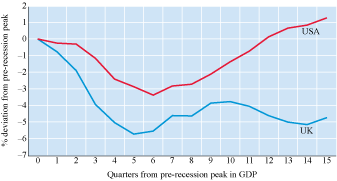
This diagram is a time series line chart. The data source is Posen, 2012.
The vertical axis is labelled ‘Percentage deviation from pre-recession peak’ and is marked from minus 7 to plus 2, at intervals of 1. The horizontal axis is labelled ‘Quarters from pre-recession peak in GDP’ and is marked from zero to 15 in intervals of 1.
There are two lines on the chart, one for the USA and one for the UK.
Both lines start at zero on the vertical axis. The line for the USA is above the line for the UK at all points thereafter.
The USA line declines steadily to a low point of just below minus 3%, in the sixth quarter from the pre recession peak in GDP. It then rises steadily to reach plus 1% in quarter 15.
The UK line declines to almost minus 6% in quarter 5, rises slightly to minus 4% in quarter 10 and then declines again to minus 5% at the end of the period.
6.7 Government debt and crowding out
You have discovered that governments can boost aggregate demand either by increasing government spending or through cutting taxes. There is, however, an elephant in the room, which you must have noticed, and this section has so far studiously ignored (just to keep things simple): how can a fiscal stimulus be paid for? Surely if the government spends more to get the country out of a crisis, it runs the risk of squeezing the private sector, or even worse, bankrupting itself. These two issues are considered first by looking at government debt, before turning to a consideration of how the private sector can be squeezed by government spending.
The debt problem
You cannot spend your way out of recession or borrow your way out of debt.
This common sense mantra has been espoused by those on the right of the political spectrum in response to the economic crisis of 2008, such as the Tea Party movement in the USA. The alternative political position is captured in the T-shirt below, worn by supporters of the anti-cuts movement.

Photo of T-shirt. Printed on front the words 'The cuts won't work, they'll just make it worse'.
Rather than spending in a recession, the government orthodoxy (traditionally referred to as the ‘Treasury view’ or ‘sound finance’) has been to balance its budget by cutting expenditure. This ‘sound finance’ view, traditionally associated with the nineteenth-century Liberal Prime Minister William Gladstone, is not limited to recessions. It more generally states that the government budget should be balanced at all times (or in slight surplus so as to pay down past debt).
The balanced budget approach has been the cornerstone of the Conservative/Liberal Democrat coalition government since coming to power in 2010. With a target to balance the budget by 2016, it introduced a programme of severe cuts in government spending. In his 2010 emergency Budget, George Osborne proclaimed:
This is an emergency Budget, so let me speak plainly about the emergency that we face. The coalition Government have inherited from their predecessors the largest budget deficit of any economy in Europe, with the single exception of Ireland … That is why we have set a brisk pace since taking office.
The coalition government also argued that they inherited the largest level of debt incurred by a British government during peacetime. As shown in the box opposite, when the last Conservative/Liberal coalition was in power, led by Lloyd George (before he became a Keynesian), a similar austerity programme, known as the Geddes Axe, was implemented.
The Geddes Axe: a brief explanation
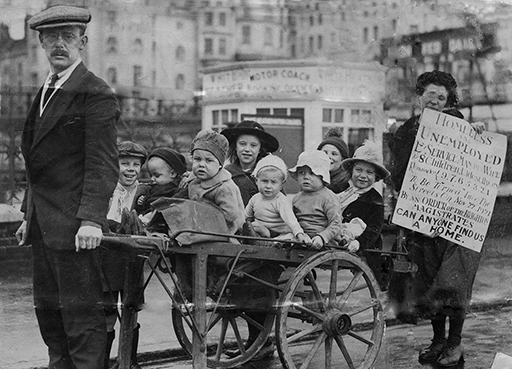
After the First World War, Britain was gripped by enormous debts and a growing sense of panic that the Government was hugely wasteful.
The national debt had risen dramatically from £677 million, about a quarter of the GDP, in 1910. By 1920 it was £7.81 billion, larger even than the country’s GDP. A vast civil service, that had come together to administer the war effort, was still operating at full capacity, while spending on education had increased substantially. Many of the middle classes complained how their tax bills had shot up.
The Government was under pressure to do something. The Times newspaper noted in 1922: ‘There are signs of an astonished realisation of the alarming bill for civil pensions that in a few years will be a millstone on the taxpayer’s neck.’
The Anti-Waste League, formed by Lord Rothermere, had put up candidates and won three by-elections during 1921.
David Lloyd George, the prime minister, acted by appointing a businessman Sir Eric Geddes to head the new Committee on National Expenditure, which was soon dubbed ‘The Great Axe’. It highlighted waste in all areas of public spending, including details such as there being a ratio of one cleaner for every vehicle in the Army. Between 1921 and 1922 it recommended economies totalling £87 million, about 10 per cent of the country’s entire GDP.
Though the cabinet only agreed to £52 million of cuts, these were enormous for the time and in the end, total cuts were larger than either of these figures. He was hailed a ‘superman’ by one leading businessman, but the axe hit some people very hard and led to a large reduction in social benefits, particularly secondary education.
The biggest cuts were in the Army and Navy. The defence budget was cut by 42 per cent in the space of one year. But other workers were hit too.
Civil Service numbers were cut by 35 per cent – mostly female staff hired during the war.
At the close of 1921, wage cuts averaging 8 shillings a week had been imposed on 6 million workers. This equates to a £58 fall in today’s money and led to growing anger against the government.
The cuts were driven by a Treasury desperate to keep a control of its debts, but they partly caused Britain’s woes in the 1920s – a period of far greater economic trouble for the country than it ever experienced during the 1930s. The General Strike in 1926 can, in part, be explained by the mounting resentment caused by the cuts, though some economists argue it helped Britain exit the vicious recession of 1919 to 1921 quicker than it might otherwise have done.
The Geddes Act, introduced by one of the great Liberal administrations, ironically gave impetus to a burgeoning Labour Party. The number of seats it held rose from 59 in 1918 to 142 in 1922, reflecting a new coalition across class lines. It went on to form its first administration in 1924.
It was in the aftermath of the Geddes cuts in the 1920s that Lloyd George and Keynes formulated their arguments as to why governments could spend their way out of recession. Keynes once said ‘When the facts change I change my mind. What do you do, sir?’ – a mantra that would equally apply to Lloyd George during this period. Keynes also argued that a government spending programme could be easily paid for, without threatening government finances.
Thus far this section has made reference to both a budget deficit and government debt. It is important to be clear about how these differ.
Government debt, also called the national debt, is the total amount of money owed by the government to all those from whom it has borrowed. It is a stock, that is, an accumulated amount, not an amount measured per period of time.
The primary budget deficit is the excess of government expenditure over tax receipts in a given time period, usually one year – so it is a flow. In any year when there is a deficit, the national debt will increase. If there is a budget surplus (tax receipts exceed expenditure), then the government may decide to use part of it to reduce its outstanding debt. If tax receipts exactly match government spending, then this is referred to as a balanced budget.
Balancing the budget
The policy of balancing the budget can be looked at from a Keynesian perspective. Suppose that the government increases its spending by £30 million and balances this increase by raising £30 million in taxation. To earn this additional revenue from tax, the tax rate is increased from 5% to 10%. The economy starts at an income level of £600 million. The overall effect can be analysed in three steps.
Step 1 The tax increase
The additional £30m taken in tax reduces disposable income by £30m, but £6m of that £30m would have been saved had households still received it (assuming a marginal propensity to consume of 0.8), so the initial fall in aggregate demand resulting from the tax increase is only £24m. The increase in the tax rate from 0.05 to 0.1 reduces the multiplier, as you know from the earlier example, from 4.17 to 3.57. Applying the multiplier of 3.57 to the £24m fall in spending gives a fall in income due to the tax increase of 3.57 × £24m = £85.7m.
Step 2 The increase in government spending
The increase in government spending gives an initial boost of £30m to aggregate demand. Again applying the multiplier shows that there is an increase in income of 3.57 × £30m = £107.1m.
Step 3 The net effect
You have seen that the tax increase alone would reduce income by £85.7m but that the increase in government spending would increase income by £107.1m. To calculate the net effect of these tax and spending changes, I need to subtract 85.7 from 107.1. I conclude that income increases by £107.1m − £85.7m = £21.4m to a new equilibrium level of £621.4m.
So even though the increase in government spending has been backed by a tax increase, the overall impact is expansionary. The government can effectively gather what households would have saved as tax revenue and spend it. It may even be possible to spend your way out of a crisis and balance the budget.
A problem, however, for policymakers, is that a balanced budget expansion may not be very expansive. In the example above, £30 million extra in government spending produced a £21.4 million increase in income, so it could be said that the balanced-budget multiplier was 21.4/30 = 0.71. The increase in spending, once it has been covered by a tax increase, may be too small to make much of a difference. There is also, therefore, a Keynesian case for increasing the size of the deficit in times of recession.
Keynes and government debt
Keynes recognised the need, in times of crisis, for government borrowing to finance a sizeable expansion of government spending. The government traditionally borrows by issuing loans (referred to as government bonds or gilts) that it promises to pay back at a future date. In the meantime, interest is also paid to holders of these bonds.
Let i be the rate of interest paid on government bonds. If a bond worth £100 is issued by the government and bought by a private individual or bank, then after one year the government will pay out a percentage rate of interest. Say the rate of interest is 6%; this means that the government pays out £6 after one year. The total value of bonds (debt) issued by the government can be denoted by the term D. Thus the total interest payment made by the government is iD.
If the total amount of debt owed by the government is £300 million, for example, then the debt repayments in a particular year would be
total interest payments = 6% × £300 million = £18 million
It follows that the total government deficit is the primary deficit (government spending minus taxation) plus these debt interest payments
total deficit = government spending − taxation + total debt interest payments
This is the total government deficit that economists and policymakers usually worry about. In a more compact notation, the total deficit is
G − T + iD
In the case of Greece, during the European financial crisis that started in 2010, the main problem has been trying to service the interest payments on its debt. This problem has been compounded by the lack of confidence in Greek bonds in the world financial markets.
The ‘sound finance’ advice given by policymakers, in the European Commission and beyond, has been for Greece to cut government spending and increase taxes in order to meet its debt interest payments. From the perspective of Keynes, however, the problem with this austerity approach is that the reduction in government spending will, via the multiplier, reduce national income and the ability of the economy to generate tax revenue. In the face of this type of crisis, Keynes would have called for the government to boost income using government infrastructure spending.
Take, for example, the Liberal spending programme of £300 million in 1929, referred to earlier in the section. Keynes assumed that the government would have to take out a loan (i.e. issue bonds). Assuming that it had to pay interest of 6% on this loan, then in the first year of the spending programme government would have to meet debt interest payments of £18 million. The key question is how these debt interest payments can be covered. Using the multiplier, one can specify what happens to income and taxation receipts.
The tax-modified multiplier relationship takes the form
The multiplier captures the impact of a change in government spending (ΔG) on national income (ΔY).
Activity 15
Assuming a propensity to consume (b) of 1/2 and a tax rate (t) of 1/3, calculate the size of the multiplier.
Answer
The multiplier for this example is
For the fiscal stimulus of ΔG = £300m, the change in income would be
ΔY = 1.5 × 300 = £450m
This means, taking into account the leakage of income into taxation, that a multiplier of 1.5 leads to a £450m increase in income, in response to the £300m increase in government spending.
Now what is the impact, in this example, on receipts from taxation? In the aggregate demand model there are additional receipts from taxation (ΔT ) since the income out of which taxation is paid has increased
ΔT = t ΔY = (1/3) × 450 = £150 million
The amount of tax paid out by the national economy increases by £150 million, since there is more income available out of which to pay taxes. The government has put an additional £150 million into its coffers. For Keynes, this shows that his public expenditure increase of £300 million is affordable. With tax receipts increasing by £150 million, the £18 million of debt interest payments on the government’s infrastructure loan can easily be covered.
But what about the deficit? In this example, the deficit increases by £150 million since only half of the £300 million outlay is recouped in tax receipts. There has been no increase in the tax rate to balance the budget, as before. However, Keynes distinguished between current and capital expenditures. Current expenditures are used up in the short run, when capital stock, among other things, is fixed. In contrast, capital expenditure is expenditure made on items that are available for future use, in the long run: a period of time in which the capital stock can change. For Keynes, investment in infrastructure is not included as part of current expenditure or of the current fiscal deficit. Investment, for example in transport, would provide an increase in the assets of the country, helping the productivity of private firms, enabling them to transport their goods to customers (as would investment in education).
So for Keynes investment can be earmarked for a separate wealth-creating part of the national accounts: ‘It is not the miser who gets rich; but he who lays out his money in fruitful investment’ (Keynes, 1972, p. 123). On this basis, the investment in infrastructure could be classified as improving the health of the public sector accounts. If the accounts were in surplus, the new tax receipts would add to that surplus; if the accounts were in deficit, the new tax receipts would be used to pay off the country’s debt. Out of the £150 million tax receipts, £18 million would be used to cover debt interest payments, but a clean £132 million would be added to government coffers. For Keynes, you can spend your way out of debt, contrary to the quotation from Daniel Hannan earlier in this section (see 'The debt problem').
When is debt high?
In modern economics, however, funding capital expenditure is usually included in the calculation of government debt and deficits. In response to this constraint in the UK, governments have introduced schemes such as the Public Finance Initiative (PFI), in order to classify funding public infrastructure spending as private debt.
But even if this orthodox classification of capital spending is accepted, it can still be argued that the Treasury view, under which government spending is cut in order to balance the budgets, is misguided in times of recession. Rather than viewing this approach as ‘sound finance’, it can alternatively be labelled ‘debt alarmism’ or ‘fiscal scare tactics’. In this vein, Neild (2012) has compared gross levels of debt in the UK since 1816, as shown in Table 2.
| Year | Debt to GDP ratio | Gross debt (£000m) | GDP (£000m) | Unemployment (%) |
|---|---|---|---|---|
| 1816 | 260 | 0.78 | 0.30 | |
| 1914 | 24 | 0.62 | 2.55 | 3 |
| 1919 | 127 | 7.41 | 5.83 | 3 |
| 1923 | 176 | 7.73 | 4.39 | 12 |
| 1929 | 158 | 7.49 | 4.73 | 10 |
| 1933 | 179 | 7.63 | 4.26 | 20 |
| 1939 | 137 | 8.15 | 5.96 | 11 |
| 1945 | 225 | 21.40 | 9.50 | 1 |
| 1970 | 67 | 33.10 | 49.40 | 3 |
| 1980 | 43 | 95.30 | 222.00 | 7 |
| 1990 | 35 | 193.00 | 551.00 | 7 |
| 2000 | 45 | 426.00 | 943.00 | 5 |
| 2010 | 75 | 1071.00 | 1437.00 | 8 |
Neild (2012) makes three main points. First, the gross debt for 2010 of £1 071 000 million – just over one trillion pounds – is a large amount of money, and can easily make its way into the headlines, but it is not so high in historical terms. To show why, Neild examines what economists call the ‘debt to GDP ratio’ (ratio of total debt outstanding to GDP). In 1816, just after the Napoleonic Wars, this amounted to 260%; after the First World War, in 1919, it was 127%; after the Second World War it amounted to 225%. So the 75% of GDP in 2010 does not look so alarming in this historical context. Keynes argued that British governments are far too unwilling to spend during times of peace. They are often willing to wage a war on the French or Germans – but when it comes to attacking unemployment, governments are unusually peace-loving in their expenditure plans.
Second, there has not been one occasion during this period, argues Neild, when the British government has failed to borrow what it requires to meet spending requirements. Not when Napoleon was hauling cannon across Europe; not when the Kaiser transported a million men to the French border on his newly built railways; not even under Hitler’s Blitzkrieg. No matter how much money Britain needed to borrow to face these threats, it did not fail to raise debt. It is somewhat alarmist, Neild and others argue, to pronounce that the British government is in danger of going bankrupt. For some this is a fiscal scare tactic used to justify an ideological prejudice against the public sector.
Finally, Table 2 is used by Neild to show the dangers of cutting government expenditure in an attempt to reduce debt. In 1923, after the Geddes Axe, the ratio of debt to GDP went up to 176% from 127% in 1919, as GDP fell from £5.83 thousand million 1919 to £4.39 thousand million in 1923. Unemployment, as shown in the table, increased from 3% to 12% over the period 1919–23. Similarly, a series of cuts by the Ramsay MacDonald government in the early 1930s, which Keynes railed against, led to a reduction in GDP from £4.73 thousand million in 1929 to £4.26 thousand million in 1933. The debt to GDP ratio increased from 158% in 1929 to 179% in 1933, with unemployment rising to 20%. For Neild, as also argued by Keynes, debt problems (as expressed in the debt to GDP ratio) are caused in peacetime by low GDP – not by wasteful spending by governments.
The Keynesian argument is that cuts in government spending can lead to an increase in the fiscal deficit; the best way to reduce deficits is by increasing output, and this can at times require injections of aggregate demand from discretionary fiscal policy. But this has not been the consensus among policymakers. The European Union, for example, has sought to put severe constraints on fiscal policy. Under the Stability and Growth Pact, set up in 1996, European countries were set a target for government deficits of 3% of GDP, and could be fined if this was transgressed. So when a recession comes along, even the automatic stabilisers must be taken off the policy bike if the 3% target is breached.
This inflexibility led to a relaxing of the 3% target in 2005, in order to allow for business cycle fluctuations. As shown in Table 3, in the economic crisis that swept across Europe, by 2010 even Germany, one of the most fiscally conservative of the European Union members, was unable to meet the 3% target. The entry −4.3 shows that in 2010 Germany had a fiscal deficit (indicated by this being a negative number) at 4.3% of GDP; in 2007 Germany had a surplus of 0.2% of GDP. In 2007, before the recession took hold, all the countries shown in Table 3 (apart from Greece) were either in surplus or had deficits that were within the 3% target. It was the combination of collapsing GDP and the use (automatic and discretionary) of fiscal stabilisers that led to the breaking of the target. The key question for macroeconomists is whether a more austere fiscal policy at the time would have worsened or reduced the deficit.
| 2006 | 2007 | 2008 | 2009 | 2010 | 2011 | |
|---|---|---|---|---|---|---|
| Germany | −1.6 | 0.2 | −0.1 | −3.2 | −4.3 | −1.0 |
| Greece | −5.7 | −6.5 | −9.8 | −15.6 | −10.3 | −9.1 |
| Spain | 2.4 | 1.9 | −4.5 | −11.2 | −9.3 | −8.5 |
| Italy | −3.4 | −1.6 | −2.7 | −5.4 | −4.6 | −3.9 |
| UK | −2.7 | −2.7 | −5.0 | −11.5 | −10.2 | −8.3 |
Crowding out
A further criticism levelled at the Keynesian fiscal policy is the risk of crowding out. This is the idea that government spending may squeeze out consumption and investment by the private sector, so that the growth in aggregate demand from an increase in G is at least partially offset by a fall in C and/or I.
A key proponent of the idea that government spending may crowd out consumption is the economist Roger Farmer. His arguments start with a way of looking at the consumption function that is different from the familiar Keynesian one in which consumption is determined largely by income (Farmer and Plotnikov, 2012). The alternative is based on an approach developed by Milton Friedman called the permanent income hypothesis (Friedman, 1957, pp. 21–2). In Friedman’s view, consumption is closely linked to wealth rather than income. People take a long view and set a normal level of consumption according to their wealth. This means that people may borrow now to support a high standard of living if they expect their earnings to rise in future (because of, say, the anticipated rewards from their education, training and experience), or they may limit their consumption now in order to save enough for a comfortable lifestyle later when income is expected to drop (typically after retiring).
The gist of Farmer’s argument is that if the government announces an increase in government spending, G, then households will expect this to mean a rise in taxes, T, later (whether to bring the government’s budget back into balance or to pay off government debt used to fund the increase in G). Given their long view, households will offset the gain to themselves from G today against the future loss in T – and so increase their savings to cover the expected future tax bill rather than increasing consumption, thus partially or completely offsetting the rise in G.
Barro (1981) also points out that many types of government spending can be seen as close substitutes for private-consumption goods – for example, a public health service (like the NHS in the UK) is a substitute for private medical care, unemployment benefits are a substitute for private insurance, publicly funded schools and universities are substitutes for private education, and so on. If the government increases spending on these types of items, then consumers will cut back on the amount that they spend privately on similar items.
Keynes offered an explanation of how government borrowing to fund a rise in G could crowd out private investment:
If, for example, a Government employs 100,000 additional men on public works, and if the multiplier … is 4, it is not safe to assume that aggregate employment will increase by 400,000. For the new policy may have adverse reactions on investment in other directions … The method of financing the policy and the increased working cash, required by the increased employment … may have the effect of increasing the rate of interest and so retarding investment in other directions.
If the government issues too many bonds, then it may have to increase the rate of interest in order to find buyers. This is what happened to Greece and Italy, from around 2010. The high interest rate in these countries would have had an adverse impact on the level of private investment; hence some would argue that government overspending crowded out the private sector.
However, for some countries, such as the UK and the USA, this argument may not apply. For some time after the 2008 crisis, interest rates languished at low levels, despite high deficits. Economies are often more complicated. A major factor determining the effectiveness of fiscal policy is the confidence that international markets have in government-issued debt and animal spirits. As Keynes puts it:
If animal spirits are dimmed and the spontaneous optimism falters, leaving us to depend on nothing but a mathematical expectation, enterprise will fade and die.
6.8 Summary
In Section 6, a lot of time has been spent on placing Keynes’s aggregate demand approach in its historical context: from the austerity of the 1920s and 1930s, to the golden age of Keynesian economics in the 1950s and 1960s, to the obsession with deficits since the 1990s. This is for two main reasons. First, it is important to have a feel for where ideas come from, and why economists and policymakers have considered them to be important – to give you a foundation in the discipline of macroeconomics and its place in political economy. Unemployment was the key prewar illness, and Keynes is the economist said to have developed the required medicine, which became the basis for postwar policy. This is the backdrop to modern macroeconomics as we know it.
Second, the spectre of unemployment has come back with a vengeance since the economic crisis of 2008, and Keynes also has made something of a comeback. His ideas are suddenly relevant again. The debates that took place in Keynes’s time – about whether fiscal policy can work, the fiscal stabilisers available to the government, whether governments can afford to stimulate aggregate demand, and whether they should instead cut spending in order to reduce the deficit – are all highly relevant to recent debates throughout the world.
7 Zooming in on firms
So far, we have concentrated on the study of macroeconomics, but have not focused on the economics of individual firms or markets. To understand microeconomic theory, we study the activities of firms, their production processes and the markets where goods and services are traded. The idea of firms and production should be familiar to you, for instance, when we discussed how changes in the level of investment by firms influences aggregate demand and overall GDP. Section 7 will explore the activities of firms in more detail. We will begin to look at activities such as how production processes can be modelled in economics, and how the prices of specific goods and services – the market price – depend on how much firms are willing to supply, but also the quantity which consumers are willing and able to buy.
The section examines how firms can grow by increasing output and reducing cost. It looks at how production can be organised efficiently, and also shows that in any market there will be winners and losers. The economic theory in the section is closely linked to examples of real firms and markets that can be used to demonstrate how you can apply microeconomic theory to everyday news and events. It will help you to understand why the price of fresh food rises when supply is scarce, and why some firms make large profits while others struggle to survive.
7.1 Facing the competition
Activity 16
Examine the three figures shown below. Pause for a moment and consider what story they tell us about how these two economies are performing.
How do you think the macroeconomics relate to the performance of firms in these two countries?
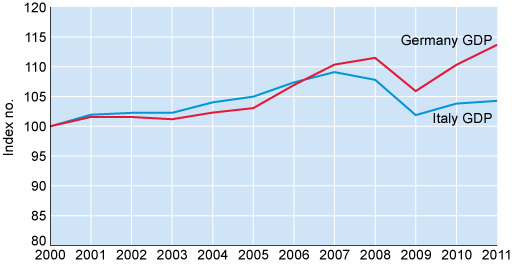
This diagram is a time series line chart.
It has ‘Index number’ on the vertical axis, running from 80 up to 120 in intervals of 5.
The horizontal axis shows the years, running from 2000 on the left to 2011 on the right.
There are two lines shown on the diagram, one labelled ‘Germany GDP’ which is in red and the other labelled ‘Italy GDP’ which is in blue.
Both lines start at 100 on the vertical axis. They both rise steadily, staying close together, to reach around 110 in 2007. From 2007 the lines diverge. The Germany GDP line continues to rise a little to 2008 and then falls to just over 105 by 2009, before rising quite sharply to reach 115 by 2011.
In contrast, the Italy GDP line falls to about 102 in 2009 and then rises but only very shallowly to just reach 105 by 2011.
The data source is Eurostat 2013a.
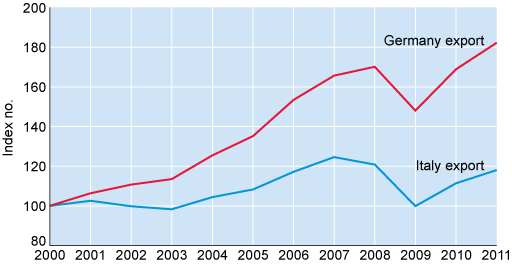
This diagram is a time series line chart.
It has ‘Index number’ on the vertical axis, running from 80 up to 200 in intervals of 20.
The horizontal axis shows the years, running from 2000 on the left to 2011 on the right.
There are two lines shown on the diagram, one labelled ‘Germany export’ which is in red and the other labelled ‘Italy export’ which is in blue.
Both lines start at 100 on the vertical axis but then diverge immediately. The Germany export line rises steadily to reach 170 by 2008. The line then falls steeply to about 150 in 2009 before rising steeply to reach just over 180 by 2011.
The Italy export line is pretty flat to 2003, it then rises to reach just over 120 by 2007. The line shows a sharp fall back down to 100 in 2009 before rising to reach 120 by 2011.
The data source is Eurostat 2013a
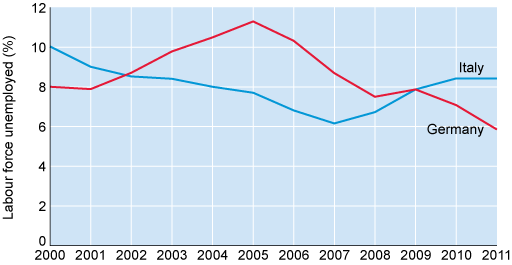
This diagram is a time series line chart.
It has ‘Labour force unemployed (percent)’ on the vertical axis, running from 0 up to 12 in intervals of 2.
The horizontal axis shows the years, running from 2000 on the left to 2011 on the right.
There are two lines shown on the diagram, one labelled ‘Germany’ which is in red and the other labelled ‘Italy’ which is in blue.
The Germany line starts at 8% in 2000, then rises steadily to around 11% in 2005 before falling to just under 8% in 2008. The line then rises slightly to 2009 before falling quite steeply to 6% in 2011.
The Italy line starts higher up, at 10% in 2000. It then falls steadily to below the Germany line, to reach 6% in 2007. From 2007, the line rises steadily to reach just over 8% by 2011. As it rises, it crosses the Germany line in 2009.
The data source is Eurostat 2013a.
Answer
The three figures above give a brief overview of the recent performance of the Italian and German economies. They suggest a contrasting economic performance. From 2007 the performance of Italy’s GDP has fallen behind Germany’s, as shown in Figure 24, particularly in the period following the economic crisis. Over the last decade, Germany has continued to improve its export performance, whilst Italy’s export levels have struggled to increase beyond the level in 2000. Interestingly, the unemployment rate in Germany has fallen since 2005, having started at a much higher rate than in Italy. Germany’s unemployment has continued to fall, even in the period following the economic crisis. In contrast, unemployment in Italy has remained between 6–8 per cent, and increased starting from 2008.
The difference in performance at a macro level may suggest some insight into the aggregate performance of firms in each country; it may suggest that German firms have some advantages over their Italian counterparts. For instance, investment in human capital in a country should help to increase the productivity of firms and make them more competitive internationally. So we might expect German firms, on average, to perform better than their Italian peers. However, even if there are differences in the macro performance of two countries, when we look at the micro level, we may be able to detect common characteristics of firm behaviour that can be related to higher performance, whether firms are based in Italy or Germany.
Firms in Italy and Germany
Activity 17
Watch the following video, Facing the competition, which examines how firms in Italy and Germany are facing up to strong international competition. Then answer the questions below.
Transcript: Facing the competition
Question (a)
(a) What are the different challenges faced by firms in Germany compared to firms in Italy?
Answer
The video raises a variety of issues at both the macro and microeconomic level, so your notes may be different from those here.
The video describes the story of a strong German economy with rising exports and falling unemployment compared to a struggling Italian economy. In Italy, the video indicates some of the macro problems related to lack of productivity growth and a lack of investment. A lot of Italian firms are very small so this can be a barrier towards improving production technology and human capital. Being able to increase productivity is one strategy for competing with firms based in countries with lower wages.
Question (b)
(b) How do macroeconomic conditions relate to firm performance?
Answer
The direct relationship between macro and micro performance is not clear in the video. Dr Nerb emphasises the role of change to Germany’s labour market – increasing flexibility of labour by allowing firms to recruit workers on a temporary basis, which is supposed to encourage reduced unemployment. However, Professor Mazzucato strongly disagrees, suggesting the real change is also due to Germany investing in research and development (R&D) and human capital to make firms perform better.
Question (c)
(c) What factors determine the success of firms? How are these factors different in Italy and Germany?
Answer
Successful firms, whether in Germany or Italy, share similarities: instead of trying to compete directly with low-cost producers, they have differentiated their products, focusing on very high-quality goods requiring specialist expertise. So even though the macroeconomic situation in each country is different, there are similar examples shown for how firms can succeed. In this section, we will investigate some of the ways we can model how firms compete.
7.2 Microeconomics – what is a firm?
If we are to make sense of microeconomics, we have to examine the nature of one of the most important economic agents that make up the economy – what we refer to as 'firms'. This section introduces you to the economic concept of a firm.
Butchers, bakers and candlestick makers
In earlier sections, firms were grouped together as one part of the circular flow of income model. But this begs the question, what is a firm?

Activity 18
Think about the goods and services you use each week – what types of firm produce them? You may also work for a firm. Make a quick list of at least five different firms that you have a connection with, for instance, as a customer, employee, investor or owner. What are the similarities between firms on your list?
Answer
Your list may show a bewildering variety of different firms, a mixture of well recognised national names, other local suppliers, and some that may appear to have only a virtual presence.
The diversity of firms in the economy is enormous: from the local corner shop, bakery or other food producers such as dairy farmers, to vast enterprises like Microsoft or Apple producing consumer goods, or GlaxoSmithKline or Pfizer producing pharmaceutical and health care products. Major multi-product firms are bigger on most measures of size than the economies of many whole countries, and also operate from sites across different countries, giving them the term Multi-National Corporations (MNCs). Not all firms produce goods, but some instead provide services, or a mixture of both goods and services. Services firms offer a range of activities, from the professional services, such as tax, legal and financial advice offered by ‘The Big Four’ audit firms (PWC, Ernst & Young, Deloitte and KPMG), or caring and social services provided by a local childminder or nursery.
Some firms are particularly well-known, capturing the attention of the media by developing innovative products to challenge the status quo. In fact, firms like Microsoft, Apple and, more recently, Amazon and Google began as small enterprises before growing to become large corporations known to households internationally. Aside from these high-profile firms with customers all over the world, there are many firms that sell directly to other businesses and provide intermediate goods and services as inputs into other firms’ production processes.
Defining a firm
Firms are interesting economic agents, being celebrated for their achievements, and creating wealth and innovative products and services unthought-of a decade earlier. However, certain firms are viewed as a source of division, responsible for increasing inequality in society. Some firms provide us with basic goods we routinely buy every week, like a pint of milk, to which we may give little thought about how it is produced. Other firms are seen as all-powerful, like those in energy, health care or defence, able to move the opinion of national governments and sometimes, it is claimed, to ride roughshod over social and personal needs. Firms are controversial, important, and a fascinating part of any attempt to understand economic behaviour. In spite of such variation, we can give an economic definition of a firm that takes account of this diversity.
We can define a firm as an organisation that purchases, combines and transforms factor inputs (such as land, labour and capital) into outputs of goods and/or services for sale.
7.3 Production cost
Efficiency and production costs are two issues firms pay careful attention to. If a firm is to compete and survive, it must be an efficient organiser of different inputs into production. Firms must use production inputs like raw materials, labour and capital efficiently as these will reduce production cost.
Cost minimisation is an important objective for a firm, as you have seen in the video, Facing the competition in Section 7.1. Reducing cost helps to increase profit, the difference between the sales value of output (revenue) and production cost. Higher costs are often cited as responsible for influencing profits in the retail sector, for example the popular retailer H&M posted a smaller than expected rise in profit in 2012 because of rising input cost.
H&M profits hit by higher costs

Profits at the world's third biggest clothes retailer, Hennes & Mauritz, have edged higher.
In the first quarter H&M made a net profit of 2.7bn Swedish krona ($406m; £255m), up from 2.6bn krona in the same period in the previous year.
The company said that profits were hit by higher purchasing costs, which it did not pass on to customers.
H&M also announced that it will launch a new independent chain of stores next year.
H&M chief executive Karl-Johan Persson said: "The new year has started well with a strong sales increase in the first quarter.
"Despite increased purchasing costs we have continued to strengthen our customer offering."
The company plans to open its first stores in Bulgaria, Latvia, Malaysia, Mexico and Thailand this year.
Critically, if firms fail to manage costs, they risk going out of business because the cost of production exceeds the revenue received.
Production cost can be reduced by increasing productivity (reducing the quantity of inputs needed to produce the same output) or using inputs with a lower price. One way to reduce input price is to make use of cheap labour in production through offshoring parts of the production process.
Production: offshoring and outsourcing
In the video, Facing the competition, several Italian clothing firms had considered changing the location of their production – either outsourcing the work to another firm, or moving their own production facilities abroad to save on labour cost. However, such a strategy has challenges: outsourcing reduces a firm’s control over parts of the production process and may produce quality issues. Offshoring involves investment in labour (training), and capital and land to set up a production facility. It may also take time to achieve the desired production standards. Some firms that decide either to offshore or outsource fail to consider their total cost of production and how costs may change over time when making their decision.
Activity 19
Read the article 'Herd instinct – Companies need to think more carefully about how they offshore and outsource' from The Economist and list at least two factors that can make firms reverse a decision to offshore or outsource. Can you think of any other factors not mentioned in the article?
Answer
Here are three different issues in the article – you may have found others.
- Labour cost increase. The article highlights that when labour cost is not a large proportion of total cost, firms may not gain from offshoring. If the motivation for offshoring is access to cheaper labour input, then firms that have labour cost that is a low proportion of their product’s total cost have little to gain from moving production overseas. Also as increasing numbers of firms follow the same strategy, they end up producing in the same country or location, which pushes up local wages, eroding the expected cost saving.
- Quality of production falls. If a firm has high-quality standards, offshoring can make it difficult to maintain them or achieve similar quality levels of output because of a lack of experience and training in the workforce. This is also true with outsourcing, which has further difficulties for firms to maintain control of production processes taking place outside the firm. The video, Facing the competition, also highlighted that some firms had these concerns about the quality of producing goods from offshore or outsourced locations.
- Expected cost savings fail to materialise. The article also suggests some firms fail to allow for delays and unexpected problems that arise as a result of their offshoring or outsourcing decision. For example, consider the case of Boeing described in the article.
Some reasons not listed in the article include:
- Economies of scale cannot be realised. Economies of scale are not discussed in the article, but the video, Facing the competition, describes how small textile producers lacked the motivation to offshore production because they could not gain from economies of scale – their businesses were too small and could not realistically hope to increase output. Firms that only produce a small output will not realise the labour cost saving from offshoring, but will still face similar issues related to loss of control and quality.
- Increase in cost of transport. The production cost when firms offshore or outsource may involve significant transport costs that depend on factors outside the control of the firm.
Economists and time
A decision to offshore or outsource production involves a significant reorganisation of a firm’s production processes, involving new production sites and potentially closure of existing ones. There is always a period of time in which some things cannot be changed, like the location of production activity, or it may take time to train and recruit the appropriate labour needed for production. Microeconomists use the concept of a short run and long run to define two periods of time. In microeconomics:
- In the short run, at least one input of production is fixed, and cannot be changed.
- In the long run, all inputs of production can be changed.
This simple distinction between short and long run is helpful for thinking about the different ways firms can manage costs. In the long run, the firm has the opportunity to achieve the minimum cost available as it can change its input of labour, capital, land, energy etc. to improve the efficiency of the firm. In the short run, some factor inputs are fixed, so the firm must make do.
One problem with making a distinction between two time periods is that in reality the firm is always operating in the short run whilst making plans for the long run. Once long run plans are realised, they become part of the short run situation of the firm: the firm plans for the future again, and so the process continues. This can make the distinction between the short run and long run appear blurred.
The short run and long run capture the situation of a firm at a particular point in time. The short run and long run are theoretical concepts, designed to help model the behaviour of firms. They are particularly helpful in an economic model describing how costs can be expected to vary for a typical or representative firm. This model is referred to as a cost curve.
7.4 Cost curves
This section uses the concept of the short run and long run to understand the cost curves of a firm. It looks at long run average cost (LRAC) curves first, and then looks at short run average cost (SRAC) curves.
Long run average cost (LRAC) curves
In the long run it is possible to change all the inputs used in production. The long run average cost curve shows the average cost for the firm at a range of different levels of output. The firm can potentially reduce costs from:
- economies of scale
- technological change
- learning by doing.
The figure below summarises these three channels of cost reduction.
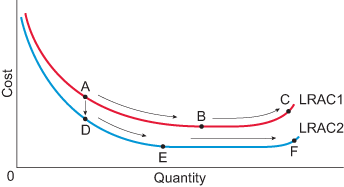
This diagram has ‘Cost’ on the vertical axis and ‘Quantity’ on the horizontal axis.
It shows two very shallow U shaped curves, one just above the other. The upper curve is labelled ‘LRAC1’. The lower curve is labelled ‘LRAC2’. The lowest sections of both curves are actually quite flat for a long section before rising again. The upward rising section of both curves is very short.
Three points are marked on LRAC1. Point A is marked about half way along the downward sloping section of the curve. Point B is marked at the lowest point of the curve. Point C is marked on the upward rising section of the curve.
Three points are also marked on LRAC2. Point D is marked about half way along the downward sloping section of the curve. Point D lies directly below point A on LRAC1. Back on LRAC2, Point E is marked at the start of the flat lowest part of the curve. Point F is marked on the upward rising section of the curve.
A firm moving from point A to B is a clear example of economies of scale: average cost falls as output increases. If the firm were on LRAC 2, then moving from D to E would also be an example of economies of scale.
Note that learning by doing cannot be shown on Figure 30. All LRACs (like the curve used above) show output for a given period of time on the horizontal axis. However, learning by doing is gained from cumulative experience of production, which is gained over time, not necessarily as a result of increasing output per day or per year.
From point A to point D, the firm’s LRAC has shifted downwards, so it is an example of technological change. Note in this example, at any output the firm’s average cost is lower having shifted to LRAC 2 compared to LRAC 1.
Diseconomies of scale only occur when a firm experiences increases to average cost as output rises. This occurs on LRAC 1 as the firm moves from B to C, and on LRAC 2 as the firm moves from E to F.
Each of the LRAC curves shown have a point which identified the minimum efficient scale (MES). For LRAC 1, this is point B, and for LRAC 2, this is point E. The MES occurs at the lowest level of output where average cost is at a minimum.
Economies of scale
Sources of economies of scale can be divided into different types. These types relate to how the activities of the firm are organised in order to reduce the average cost of production as output increases. Broadly, there are three sources of internal economies of scale; two you have met already: economies of increased dimensions, and specialisation. Now we will introduce one more: indivisibilities.
Types of economies of scale (1)
Here is a quick description of three sources of internal economies of scale:
- Specialisation. As the output of the firm increases, each worker can become more specialised in discrete parts of the production process. As each worker becomes more specialised, their efficiency increases.
- Economies of increased dimensions. As output increases, the firm will need to increase the capacity of storage, transport or production space. As the result of a simple geometric relationship, doubling the dimensions of a warehouse will result in a greater than doubling increase to capacity. The capacity of the firm will increase more rapidly than the costs of increasing the dimensions. This can also mean it is better for a firm to bring production to a single location, as increasing dimensions of an existing production facility may be more efficient than having two separate (and smaller) production sites.
- Indivisibility. This occurs when a firm requires a minimum amount of input to operate, and as output increases, the cost of any inputs can be spread over a greater output. As a result, average cost falls as output increases. For instance, consider a steel works: making steel involves using a blast furnace, which has a big cost whether a small or large amount of steel is produced. A furnace is not divisible, so economies of scale are gained when output is increased and the furnace is used more efficiently.
Types of economies of scale (2)
Activity 20
Read each case study below and then, by dragging the labels, match each case study to the correct type of internal economy of scale.

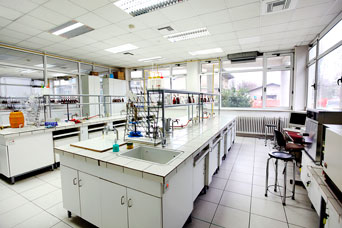
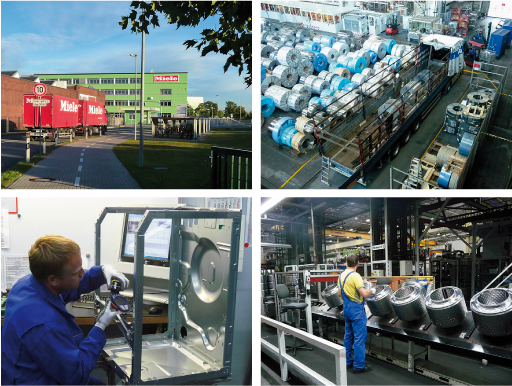
Increased dimensions
Example A
Indivisibility
Example B
Specialisation
Example C
Using the following two lists, match each numbered item with the correct letter.
Increased dimensions
Indivisibility
Specialisation
a.Example C
b.Example B
c.Example A
- 1 = c
- 2 = b
- 3 = a
Answer
Example A is a case of economies of increased dimensions because of the geometric relationship between volume and surface area. For instance, consider two tanker ships: the first a ‘coastal tanker’, 200 m long, 30 m wide and 16 m deep; the second an ultra large crude carrier (ULCC) with dimensions double the length: 400 m long, 60 m wide and 30 m deep. The volume (length × width × depth), increases from 96 000 to 720 000 cubic meters. A doubling of dimensions would increase the cost of construction, however, the volume of goods that can be transported has increased by a factor of more than seven. If the firm can increase its output to fill larger and larger carriers, then the average cost of transport falls.

Example B is a case of indivisibility. Investment in R&D is considered indivisible because it requires significant investment to yield results, and it is difficult to operate R&D below a minimum scale. As output increases, the costs of doing R&D are spread over a greater output, so average cost falls.
Example C is a case of specialisation. At Miele, the washing machine production process is divided into different stages. Workers train on particular stages, for instance, some are forklift drivers and some are engineers making sure equipment operates efficiently. Others focus on stages in the final assembly, checking different components of washing machines and distribution of goods. This type of specialisation would be expected to reduce average cost as the firm’s output increases. As output increases, workers can become more and more specialised, and so the efficiency of the production process increases and results in falling average cost.
Costs in the short run
The previous activities in this section have examined LRAC curves. Now we will look at short run average cost (SRAC) curves.
In the short run, the firm can only change output by changing variable factors. It has to make do with existing fixed factors. This reduces the opportunity to reduce average cost as output increases. In fact, in the short run, average cost is likely to rise once output reaches a certain level. The next set of activities will help you to understand the main features of the SRAC.
Short run average cost (SRAC) curves (1)
Activity 21
Table 4 shows how the total cost of a firm changes with output in the short run. Calculate the average cost at each level of output (round your answers to the nearest whole £).
Table 4 Calculating short run average cost
Short run average cost (SRAC) curves (2)
It’s often easier to represent cost curves graphically. Here the two columns of data in Table 4 are shown in separate graphs. The table is repeated below.
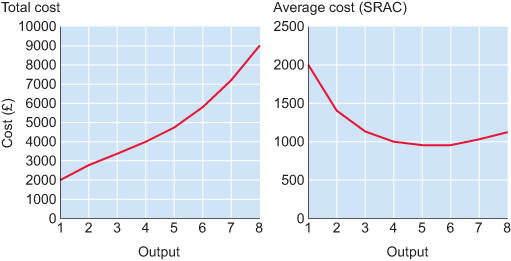
This figure shows two graphs side by side.
Both have ‘Cost (£)’ on the vertical axis and ‘Output’ on the horizontal axis. Both output axes run from 1 to 8 but the vertical axes have different scales. The graph on the left runs from zero up to 10,000 in intervals of 1000. The graph on the right runs from zero to 2,500 in intervals of 500.
These graphs plot the data in the table.
The left graph shows a line rising steadily upwards from a plot of output1, £2000, (which is a point on the vertical axis) up to a plot of output 8,£9000.
The right graph shows a very shallow U shaped curve, starting at a plot of Output 1,£2000, (which is a point on the vertical axis), steadily falling to a minimum point on the curve of Output 5,£950 and then a very gentle rise to Output 8, £1125.
| Quantity of output (units) | Total cost (£) | Average cost (£/unit) |
|---|---|---|
| 1 | 2000 | 2000 |
| 2 | 2800 | 1400 |
| 3 | 3400 | 1133 |
| 4 | 4000 | 1000 |
| 5 | 4750 | 950 |
| 6 | 5800 | 967 |
| 7 | 7200 | 1029 |
| 8 | 9000 | 1125 |
Notice that total cost increases with output, albeit at varying rates. The SRAC captures how average cost (or unit cost) changes with output. When output is low, initially average cost falls, but as output increases, average cost starts to rise. Next let’s examine the components of average cost – fixed and variable cost.
Fixed and variable costs
In the short run, some of the firm’s costs are fixed – these are costs that do not change with output. The remaining costs are variable – they change with the level of output.
The following video will help you to work through the difference between fixed and variable costs, and also show how we can apply these concepts to the SRAC curve.
Watch the video and then attempt Activity 22.
Transcript: Fixed and variable cost
Short run cost curves (1)
Activity 22
In the figure below we have an average (total) cost curve, an average fixed cost curve and an average variable cost curve. Using the drag and drop boxes, label the graph correctly.
Answer
The correctly labelled figure is shown below.
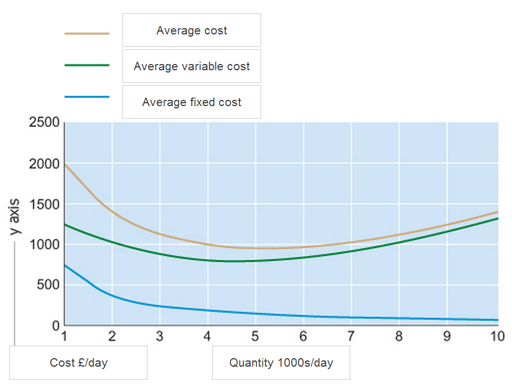
The cost curve has a vertical axis showing the cost in £ per unit. The horizontal axis shows the quantity, or units produced per day. This is shown in thousands of units per day.
The figure shows three short run cost curves.
- The lowest curve shows average fixed cost; average fixed cost will always fall as output increases.
- Next average variable cost; average variable cost has a characteristic ‘u’ shape due to the increasing and diminishing returns to variable factors.
- Finally, the average cost curve (sometimes referred to as average total cost curve) is the sum of average fixed and average variable cost. This means average cost is always greater than average variable or average fixed cost.
Notice that as output increases, the difference between average cost and average variable cost reduces. This is because average fixed cost decreases with output. Another way to think about it is that the difference between average cost and average variable cost equals average fixed cost.
Short run cost curves (2)
The next activity will check that you can interpret the shape of the average cost, average variable and average fixed cost curves described in the video, Fixed and variable cost.
Activity 23a
Click on the short run cost curve figure below to identify the approximate point where average costs are at a minimum.
Discussion
Look at the figure below. The red arrow shows the correct answer for the point of minimum average cost.
The brown arrow shows the point of minimum average variable cost. The average fixed cost curve has no minimum as it decreases with every unit of output (it is not u-shaped).
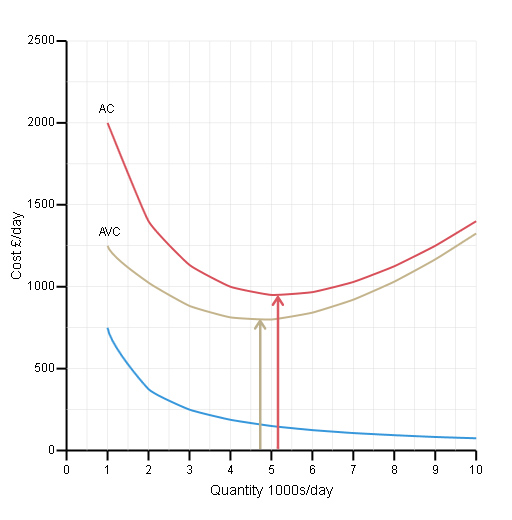
This diagram has ‘Cost £s per day’ on the vertical axis, which is marked from zero to 2500, in intervals of 500.
The horizontal axis is labelled ‘Quantity, thousands per day’ and this is marked from zero on the left up to 10 on the right.
Three curves are shown, one above the other. The upper curve is labelled ‘AC’. AC starts at a plot of 1000 Quantity, 2000 Cost. The curve slopes down steeply at first before gradually getting shallower to reach a minimum point at just over 5000 Quantity, 900 Cost. The curve then rises gradually.
The middle of the three curves lies below AC and is labelled ‘AVC’. AVC starts at a plot of 1000 Quantity, 1250 Cost. Its downward slope is shallower than AC and it reaches its minimum point at 4500 Quantity, 800 Cost. The curve then rises, with almost the same upward slope as the AC curve. It very gradually runs closer to the AC curve that lies just above it.
The lower curve is labelled ‘AFC’. AFC starts at a plot 1000 Quantity, 750 Cost. This curve slopes steeply down initially for a very short distance but it then becomes almost flat, with a very shallow downward slope. The curve ends just above the horizontal axis.
Two vertical upward arrows are shown, both running from the horizontal axis, a red one up to the minimum point of the AVC curve and a green one up to the minimum point of the AC curve.
Short run cost curves (3)
Activity 23b
This time, click on the quantity axis in the figure to identify the level output where the difference between average cost and average variable cost is smallest.
Discussion
The difference between average cost (AC) and average variable cost (AVC) is least when output is high, in this case at a quantity of 10 000/day (see the black arrow on the figure below). This is the same as spotting that average fixed costs (AFC) are lowest when output is high, because: AC – AVC = AFC. In the short run, if output were to continue to increase beyond a quantity of 10 000/day then we would expect AFC to become smaller and smaller, and so make a smaller and smaller contribution to AC.
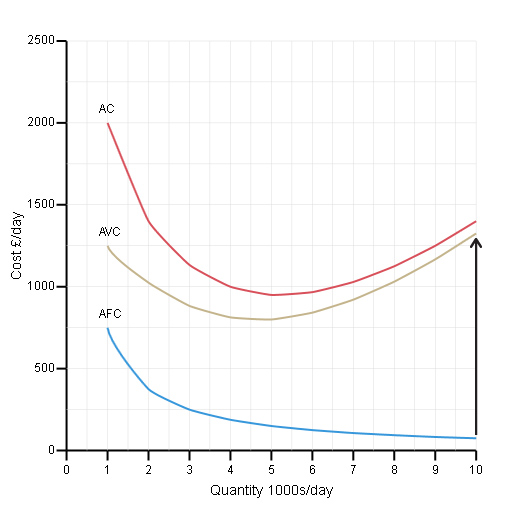
This diagram shows the same curves as the previous diagram. It has ‘Cost £s per day’ on the vertical axis, and it is marked from zero to 2500, at intervals of 500.
The horizontal axis is labelled ‘Quantity, thousands per day’ and this is marked from zero on the left up to 10 on the right, at intervals of one.
Three curves are shown, one above the other. The upper curve is labelled ‘AC’. AC starts at a plot of 1000 Quantity, 2000 Cost. The curve slopes down steeply at first before gradually getting shallower to reach a minimum point at just over 5000 Quantity, 900 Cost. The curve then rises gradually.
The middle of the curves lies below AC and is labelled ‘AVC’. AVC starts at a plot of 1000 Quantity, 1250 Cost. Its downward slope is shallower than AC and it reaches its minimum point at 4500 Quantity, 800 Cost. The curve then rises, with almost the same upward slope as the AC curve. It very gradually runs closer to the AC curve that lies just above it.
The lower curve is labelled ‘AFC’. AFC starts at a plot 1000 Quantity, 750 Cost. This curve slopes steeply down initially for a very short distance but it then becomes almost flat, with a very shallow downward slope. The curve ends just above the horizontal axis.
On this diagram, one vertical upward black arrow is shown, running from the end of the horizontal axis at output 10,000 up to the AVC curve.
Short run cost curves (4)
Activity 23c
a.
Increase
b.
Decrease
c.
Remain unchanged
The correct answer is b.
Answer
If output increases from a quantity of 3000 per day, average cost will fall. This is because at this output the average cost curve is sloping downwards.
Increasing output will reduce the average cost until it reaches a minimum at a quantity of approximately 5000 per day. Then the average cost curve slopes upwards, so average cost increases when output increases beyond 5000 per day.
Cost curve summary
This section has highlighted some important properties of cost curves. Because we expect the behaviour of costs to be similar in most firms and for most production processes, we have a model of firms’ costs that we can apply widely.
In the long run the firm can:
- vary all inputs to minimise cost
- reduce average cost by:
- adopting new technologies
- increasing output to gain from economies of scale
- over time, reducing average cost from learning by doing
- achieve no further cost saving advantages from increasing output once output is at MES.
In the short run:
- the firm is expected to have a u-shaped average cost curve
- the average cost curve shows how costs change at different levels of output
- average cost is the sum of the average fixed cost and average variable cost
- average fixed costs decrease as output increases
- average variable costs have a u-shaped curve because of the returns to inputs of variable factors vary with output
- at low levels of output, a firm is expected to experience increasing returns to variable factors, and at higher levels of output there will be diminishing returns.
The u shape of the short run average cost curve also implies something about the marginal cost curve, which we look at next.
7.5 Marginal cost curves
Now you have learned the properties of the average cost curve, you will check your understanding of marginal cost. Average cost and marginal cost are fundamental economic concepts in the analysis of how firms, industries and markets behave.
Average cost and marginal costs (1)
Watch the short video on marginal cost, which describes the relationship between average and marginal costs. Make sure you understand the difference between average and marginal costs.
Transcript: Marginal cost
Average cost and marginal costs (2)
Activity 24
Task (a)
(a) On the figure below, click on the marginal cost curve to show the point at which marginal costs are at a minimum.
Task (b)
(b) Determine the point where marginal costs equal average cost.
a.
Rises
b.
Falls
c.
Stays the same
The correct answer is b.
Answer
Yes, if marginal cost is less than average cost, producing an additional unit will reduce average cost.
Discussion
When marginal cost is less than average cost, average cost will fall. Average cost falls as output increases because the cost of producing one extra unit (the marginal cost) is lower than average cost.
Note, once marginal cost is greater than average cost, then increasing output will result in higher average cost. For instance, at a quantity of 8000 per day, average cost is less than marginal cost, so increasing output results in higher average cost.
Calculating marginal cost
So far we have analysed the relationship between average cost and marginal cost. This activity will check that you can calculate marginal cost.
Activity 25
Imagine we have a firm producing nine units of output per day at a total cost of £11 250. It increases production to ten units per day at a total cost of £14 000.
(a) Calculate the average cost when ten units are produced per day.
(b) Calculate the marginal cost of increasing production to ten units per day.
7.6 Using evidence
This section is an opportunity to practise relating some of the theory of production cost to help you analyse production activities in firms.
Cost of producing a pint
Producing a pint of milk is a costly business. Firms producing milk, usually referred to as dairy farms, take inputs in the form of land, capital (the herd, milking parlours and storage) and raw materials (such as feed and seed). They then use these inputs to make milk, which can also be used to produce cheese and yogurt.
Activity 26
Some farms may receive income from the government, but like all firms, if their income doesn’t cover the cost of milk production, they risk going out of business. Watch this short video on the challenges facing milk producers, which introduces one of the main ideas covered in Section 7: reducing cost. Notice how the video uses ideas from short run and long run cost curves.
Whilst watching the video, think about the key challenges milk producers face and what they can do to reduce these challenges. Make some notes on your thoughts here – you will need to refer back to them later on.
Transcript: Costs of milk production
Discussion
Here are some notes about the video – you may have some similar points in your notes.
- Costs of production are high, sometimes higher than the price dairy farmers are paid, and rising.
- Milk prices are falling.
- Farmers have difficulty investing in new equipment to replace worn or old equipment – this wear and tear cost is what the presenter, John Craven, refers to as ‘depreciation cost’.
- Some producers are considering stopping milk production.
Possible responses to reduce cost:
- Invest in new technology to shift the farm’s long run cost curve downwards, for example, by buying more equipment that is more efficient to run, or updating their production process (production function) to reduce labour input. However, this is difficult if the farmer cannot afford to increase their fixed cost in the short run to purchase new equipment.
- Gain from economies of scale by increasing their scale of output, like in the mega dairy example. If firms invest in new technology, not only may they experience a downward shift in the LRAC, they may also benefit from decreasing unit cost as output increases. This may be as a result of economies of scale arising from indivisibility – that costs per unit of output from running and maintaining new technology or machinery will decrease as output increases. Other indivisibilities may arise from the running of the farm office and administration, which have a fixed cost whether the farm has a high or low output, but if spread over higher output, will help to decrease average cost.
- Stop producing milk.
Challenges:
- Most farms are small in the UK, and land is scarce and expensive. It may not be easy to increase the scale of the business, like in the mega dairy example.
- Some overseas producers already produce at a lower cost per pint.
- Economies of scale require investment in production, which is difficult when making a loss.
- Issues of animal welfare related to the mega dairy.
Labour and fixed cost
Did you notice anything peculiar about the analysis of labour cost in the video? Try Activity 27 to test your understanding.
Activity 27
a.
Fixed cost
b.
Variable cost
c.
Depreciating cost
The correct answer is a.
Discussion
In many economic analyses, labour is considered to be a variable cost. However, in the agricultural sector it is not unusual to class labour as a fixed cost, such as in dairy production. Typically in dairy production, employee costs are considered fixed, because labour use is not directly related to the quantity of output. The number of employees on a farm are often low and work needs to be done to run the dairy farm, for instance to feed the herd, regardless of the quantity of milk sold. Labour input is considered fixed in the short run and so is a fixed cost. In the long run, farms might require more or less labour depending on future production plans.
Cost of inputs
In 2012, farmers argued that income received for milk fell below the cost of production. The video clip suggests part of the reason for this is due to rising input costs in dairy production. The next activity presents some data on dairy costs, which can be analysed to see if this supports the material given in the clip.
Activity 28
Look at the data table below, which shows an extract from the National Farmers’ Union (NFU) 2011 report on dairy production cost. There is also a time series chart showing the monthly price of feed cost, given in pence per litre of milk, in the years leading up to 2012.
Does the data below support the view of farmers in the video?
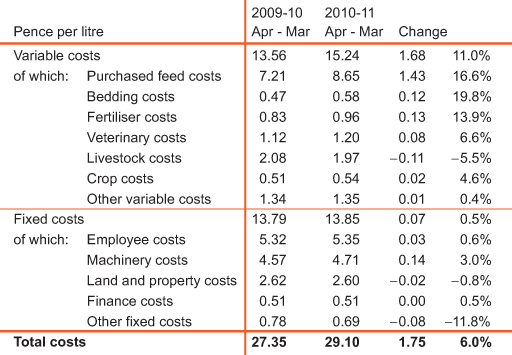
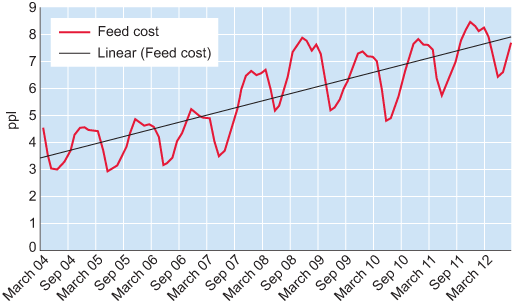
Discussion
Here are some notes made on the Dairy Co. (2012a) and NFU (2011) data:
The NFU (2011) table reports data for two years: 2009/10 and 2010/11. It reports that total costs have increased 6 per cent over the two years. Notice that the costs are given per litre – effectively this is average cost data – average cost per litre. Notably the rise in cost is due to variable costs having risen by 11 per cent between 2009/10 and 2010/11, whilst fixed costs have only risen by 0.5 per cent.
In particular, the cost of variable inputs per pint, such as fertilisers and veterinary costs, show rises between 2009/10 and 2010/11. This would seem to support that profits (margin) in dairy are being squeezed – prices are falling whilst costs are rising. However, we have to be cautious – this is only one year of data – it could be a one-off or ‘outlier’ year. In the short run, if dairy producers increased output, then average variable cost could rise as a result of diminishing returns.
The graph using DairyCo. (2012a) data shows some data on feed cost – a raw material for dairy producers. This seems partially to support the NFU report – the linear trend, as shown by the black line, shows variable costs, such as feed costs, rise on average over time. For instance, the price of feed in 2004 ranges from approximately 3 ppl to 4.5 ppl, compared to a range of 5.5 ppl to 8.5 ppl in 2011. However, although the trend is for increasing prices, the chart also shows considerable variability in the cost of feed within each year, possibly due to seasonal changes in the cost of feed.
There seems to be evidence that variable costs are rising. However, notice that we have no data on how fixed costs are changing over time.
Profits and cost
The evidence in this section suggests milk producers are relatively helpless: dairy producer profit per litre is declining as costs rise and milk prices fall. However, not everyone agrees with this view.
DairyCo., a division of the Agriculture and Horticulture Development Board (AHDB) responsible for making UK agriculture competitive and sustainable, produced a report in 2012 which looked at factors that influenced producers’ margins (profits). It found a significant variation in the production cost per litre of different firms. Some firms could produce milk more efficiently than others. The report stated that:
The relationship between milk price and margin is actually not that strong. Cost of production, on the other hand, is very clearly related to margin. This represents a real opportunity for dairy producers, as at least some of the costs of production that they face are within their control.
(DairyCo., 2012b, p. 9)
The report also concludes:
- Milk can be produced efficiently from any of the major systems that are currently practised in Britain.
- Moreover, efficient milk production is possible at almost any scale of production.
- Different factors drive profit for each system.
- The impact these factors have on returns varies considerably.
- The need to fit the system that you use to your own circumstances has never been more important.
(DairyCo., 2012b, p. 4 )
Activity 29
Given what you have learned so far, what options could producers investigate to control their production cost?
Answer
To save cost, producers may need to consider long run changes to their processes to become more efficient. This means trying to achieve the types of economies of scale and technological advances highlighted in the milk video that reduce the average cost of production. However, the second quote from DairyCo. suggests that increasing scale is not necessarily a path to efficiency. The quote indicates that there are different techniques of production that firms can use, and as a result each technique will be associated with different shaped cost curves. Some of the techniques may have economies of scale, but like in the mega dairy example in the video, may only provide a cost saving if firms can produce at very high quantities. It suggests for firms to maximise profit, they will need to find the right combination of technology and determine the optimum level of output that maximises their efficiency. The idea of searching for maximum profit by changing the quantity of output is a key economic model of the firm.
7.7 Summary
Section 7 has examined the firm and, in particular, different measures of cost. It has looked at costs in the short run and the long run. It has shown how firms might reduce average cost in the long run, and the constraints that firms face in the short run. You have worked through activities using cost curves to show how average costs are related to output in a period (e.g. per day or week). Understanding cost curves is key to understanding the behaviour of firms, industries, markets, and more widely, the supply side of the economy.
8 Conclusion
In this OpenLearn course you have developed your understanding of how economists use models by exploring the construction and use of macroeconomic models to analyse the determination of income, and by seeing how the microeconomic analysis of firms adds yet another dimension to what economists do.
In Section 1, you were introduced to the founder of macroeconomics, John Maynard Keynes.
In Section 2, you learnt how the circular flow model can be used to show either actual or planned values of economic variables. In connection with this, you considered the difference between an identity (as used in the national income accounting system) and an equality (as used in the Keynesian theory of national income equilibrium).
In Section 3, you built up a Keynesian consumption function from its components of exogenous consumption and income-induced consumption, making use of the concept of the marginal propensity to consume.
In Section 4, you looked at the modelling of saving and investment, noting how investment and consumption together make up aggregate demand in the model of a closed economy with no government sector. You also learnt about the importance of the 45-degree line in analysing equilibrium.
In Section 5, you considered how equilibrium may occur at below full employment and how full employment may be achieved by a stimulus to aggregate demand. The macroeconomic analysis ended with Section 6, which showed you how fiscal policy can be used to stimulate demand, and taught you about the importance Keynes placed on the role of the government in leading economies to better outcomes.
Section 7 concluded the course by zooming in on firms and examining some of the major factors that determine their viability and competitiveness.
References
Acknowledgements
Except for third party materials and otherwise stated (see terms and conditions), this content is made available under a Creative Commons Attribution-NonCommercial-ShareAlike 4.0 Licence.
The material acknowledged below is Proprietary and used under licence (not subject to Creative Commons Licence). Grateful acknowledgement is made to the following sources for permission to reproduce material in this free course:
Every effort has been made to contact copyright owners. If any have been inadvertently overlooked, the publishers will be pleased to make the necessary arrangements at the first opportunity.
Course image: Enrique Jiménez in Flickr made available under Creative Commons Attribution-NonCommercial-ShareAlike 2.0 Licence.
Don't miss out
If reading this text has inspired you to learn more, you may be interested in joining the millions of people who discover our free learning resources and qualifications by visiting The Open University – www.open.edu/ openlearn/ free-courses.
Copyright © 2016 The Open University